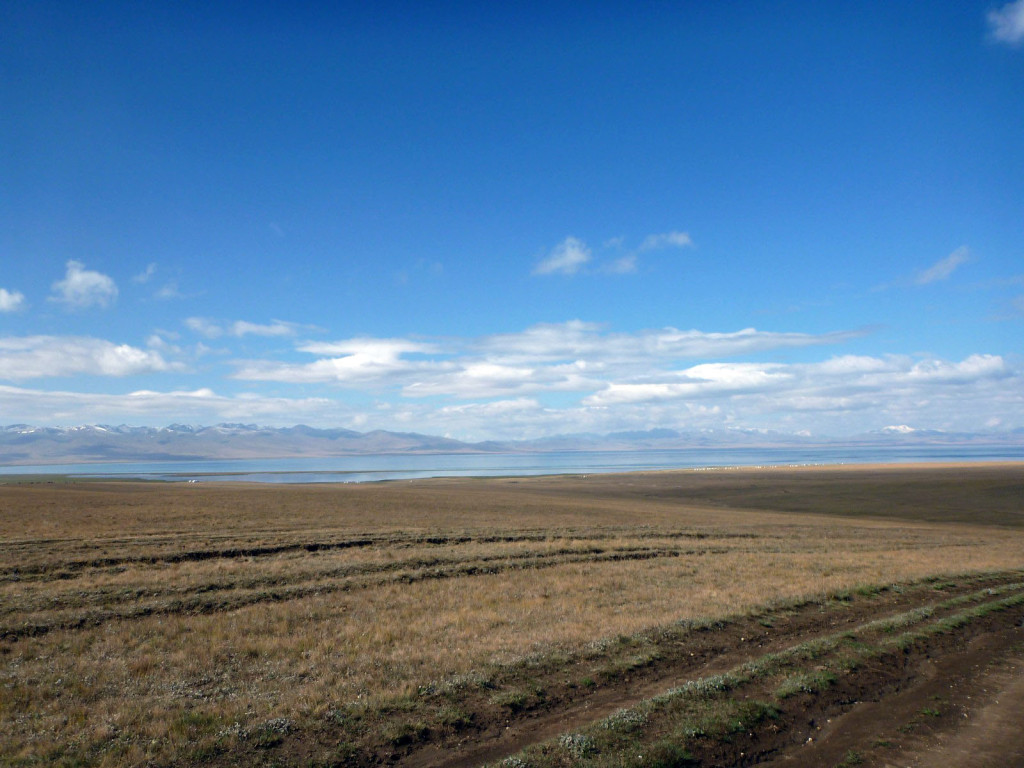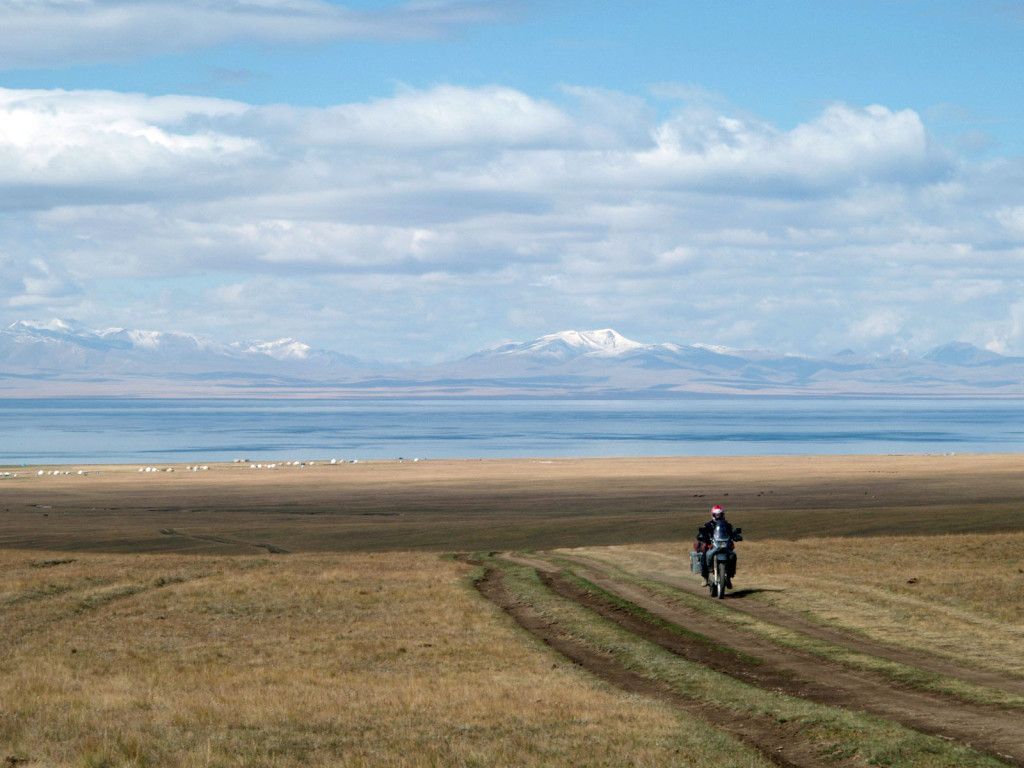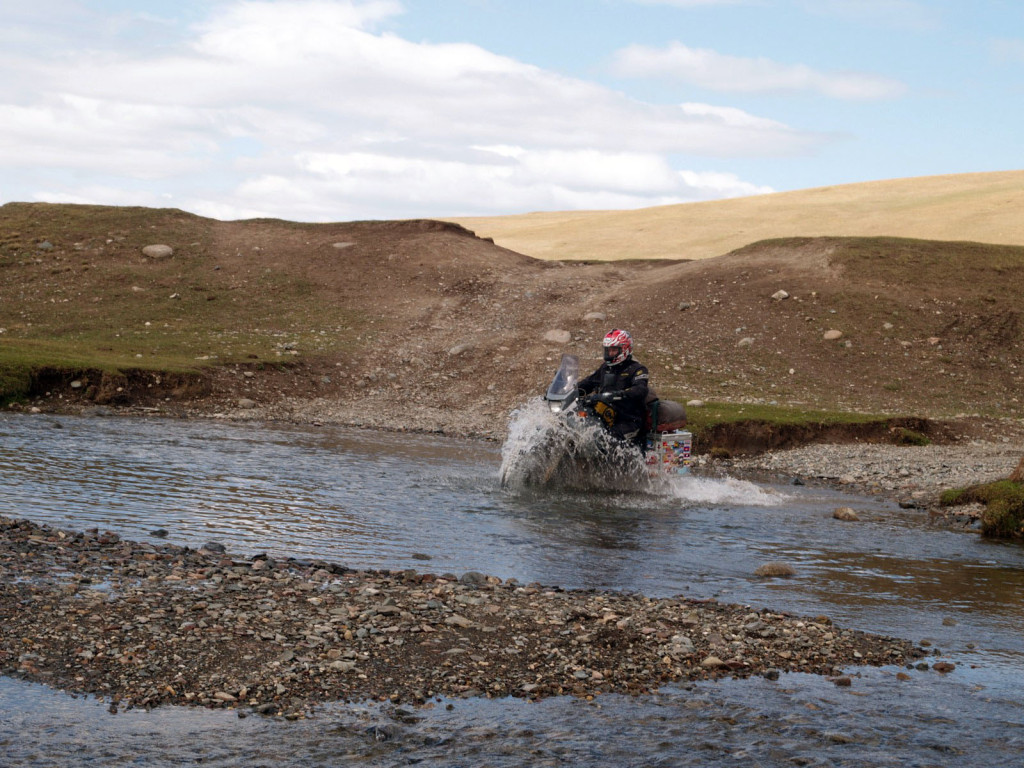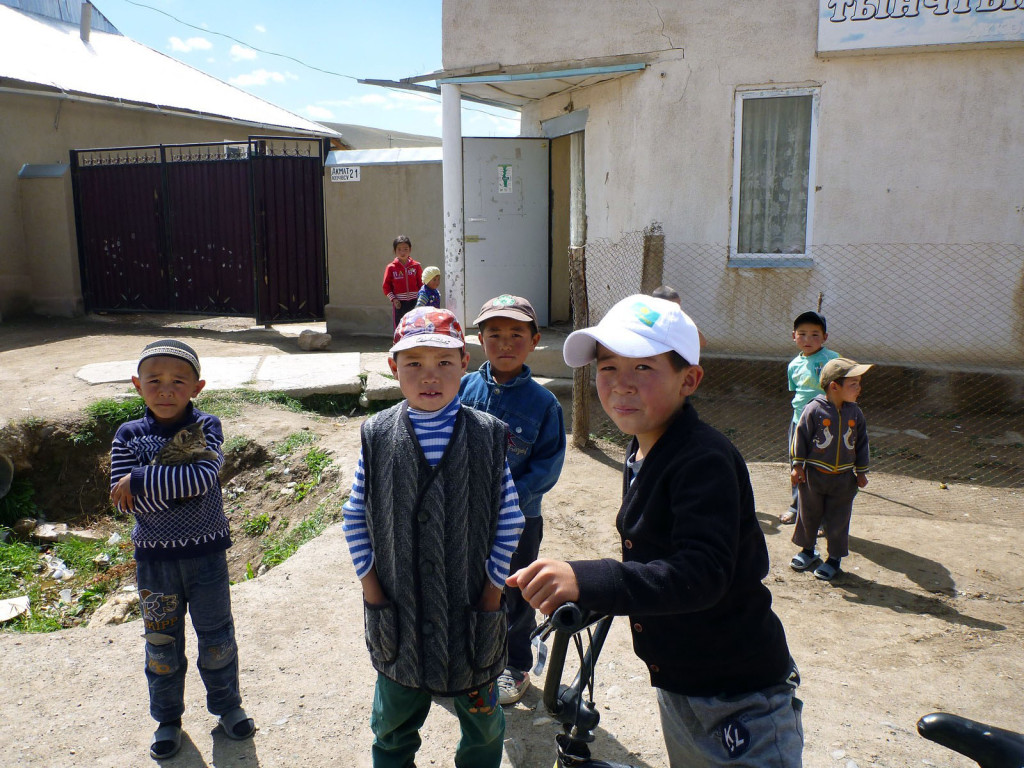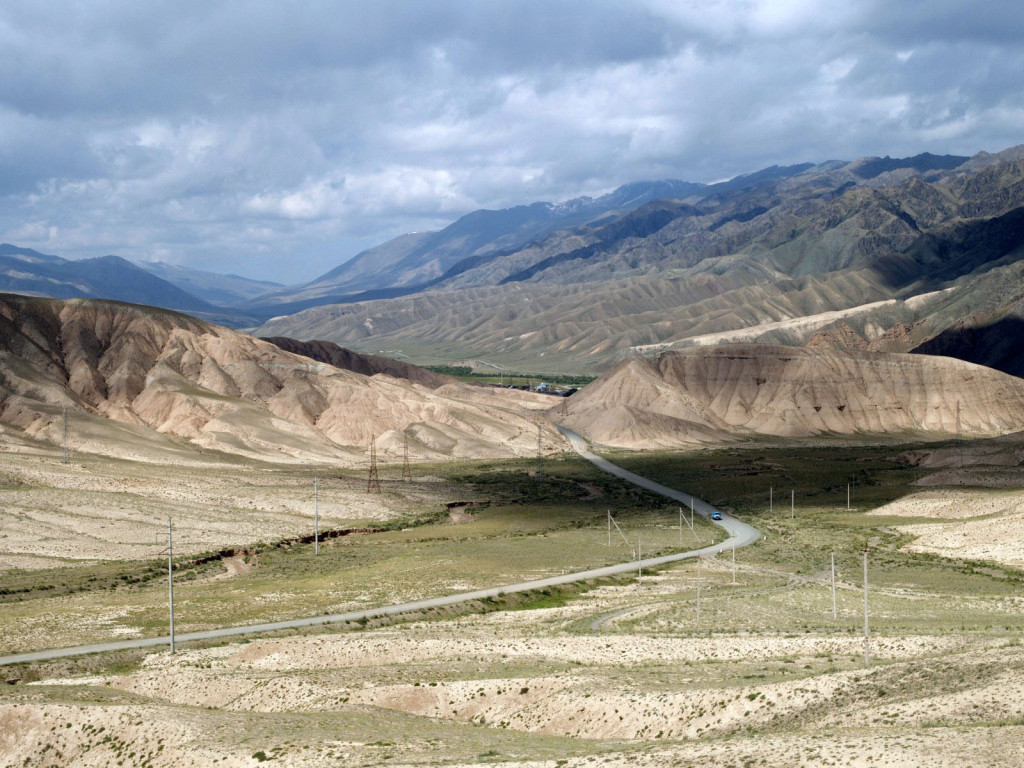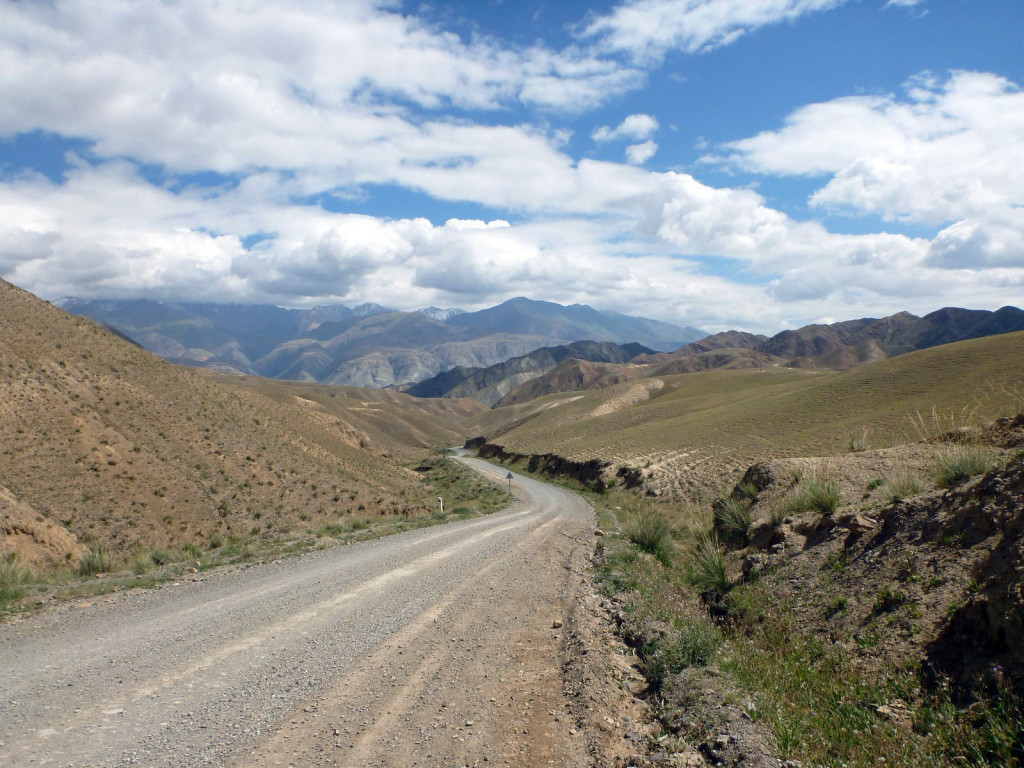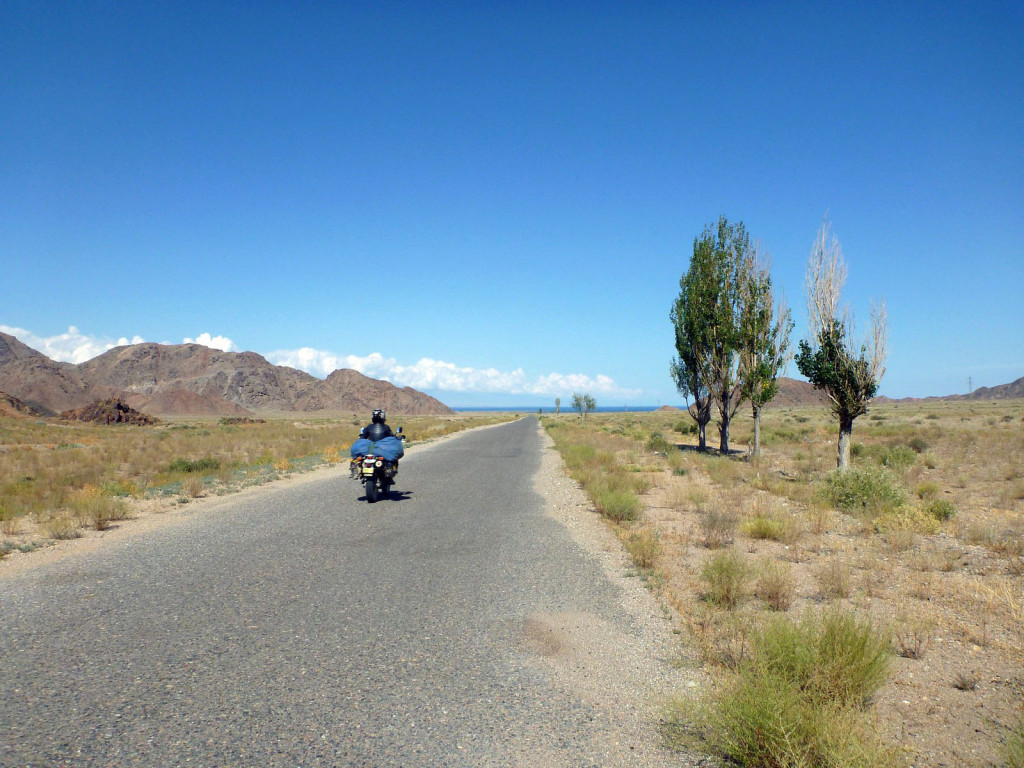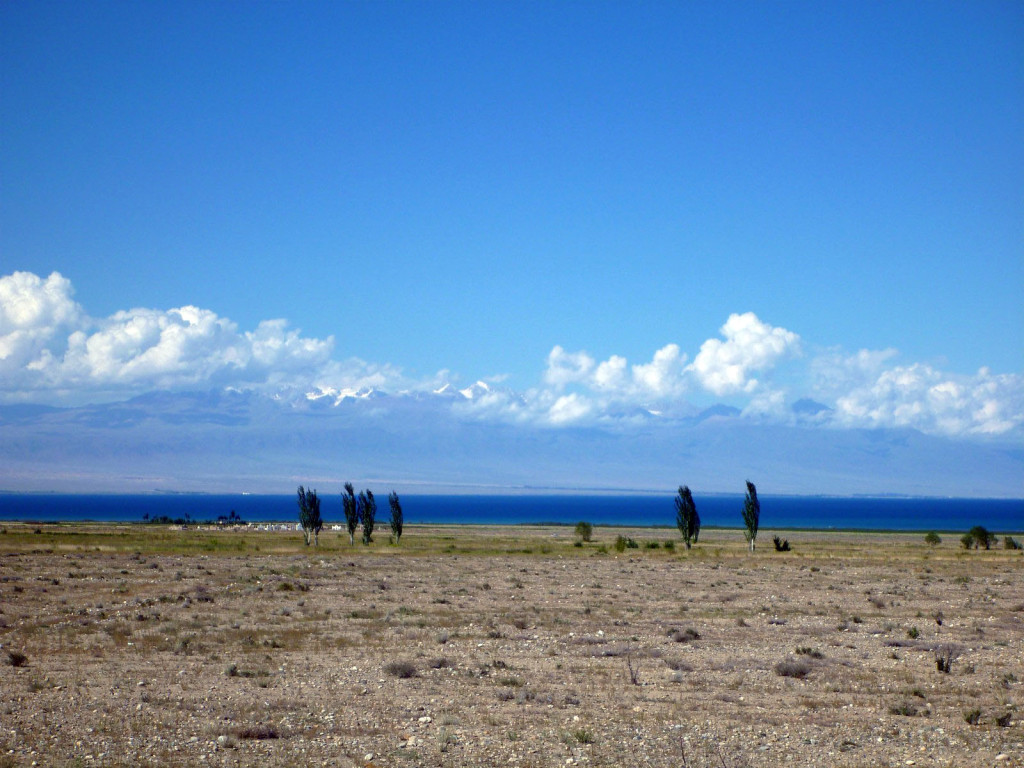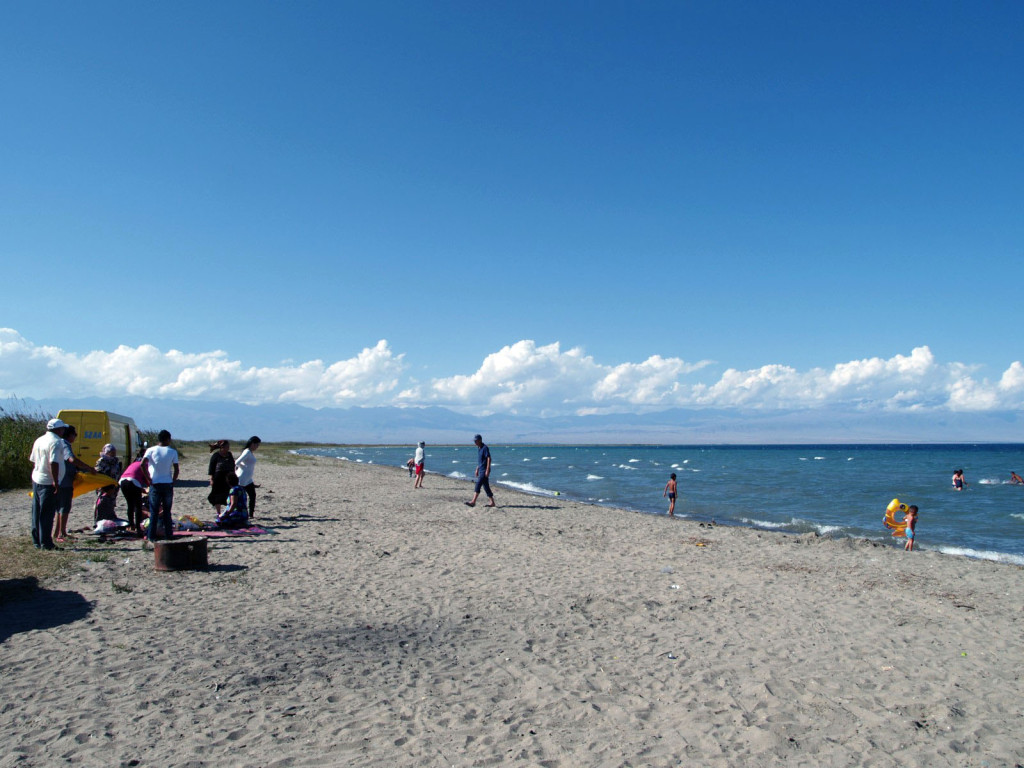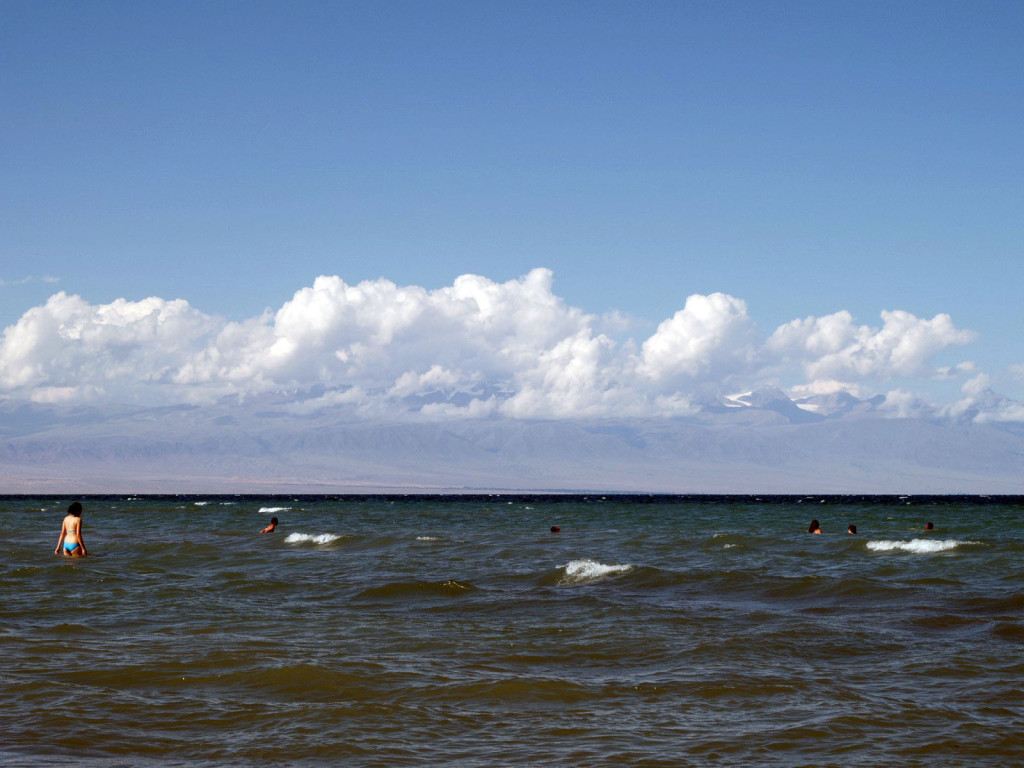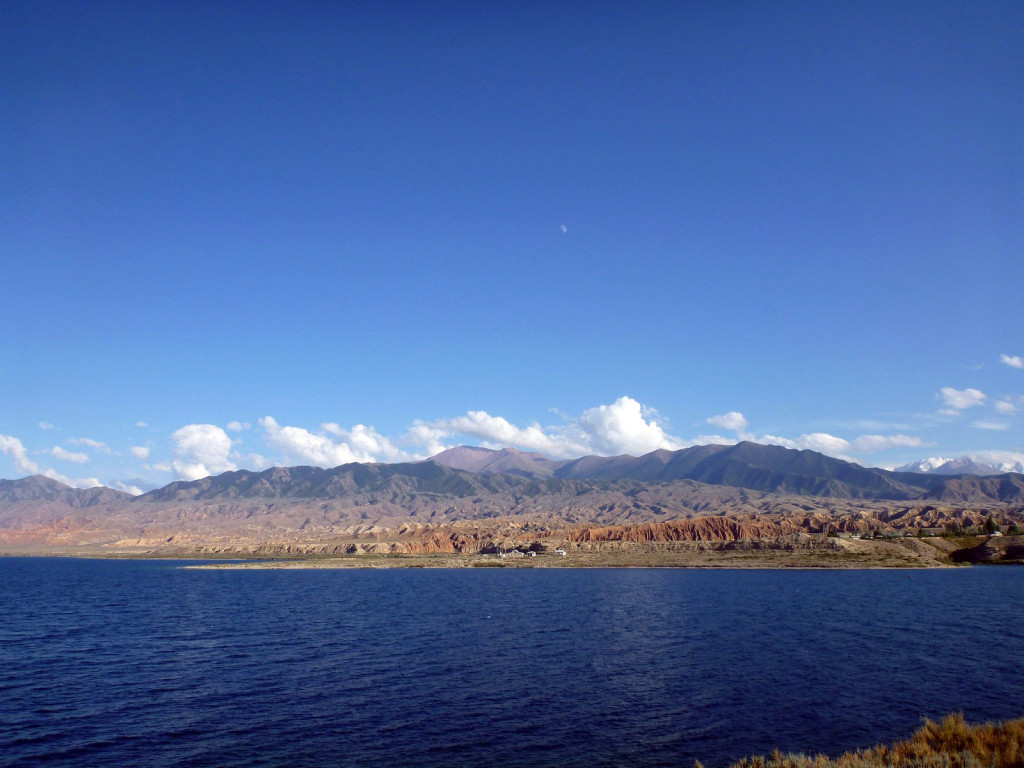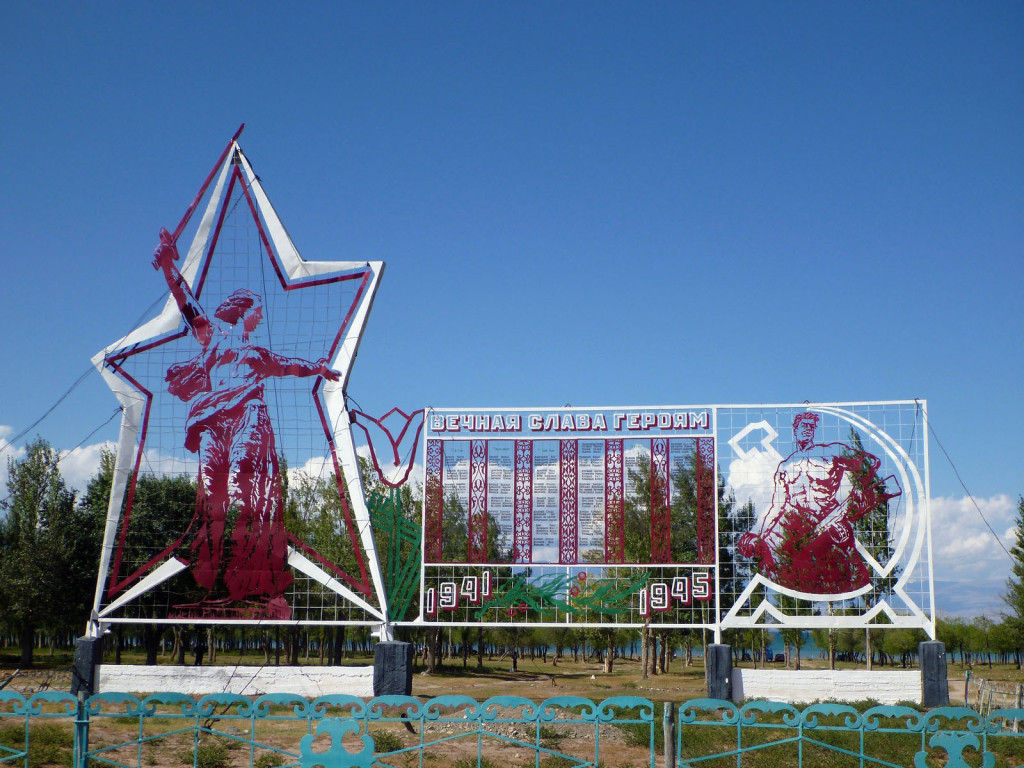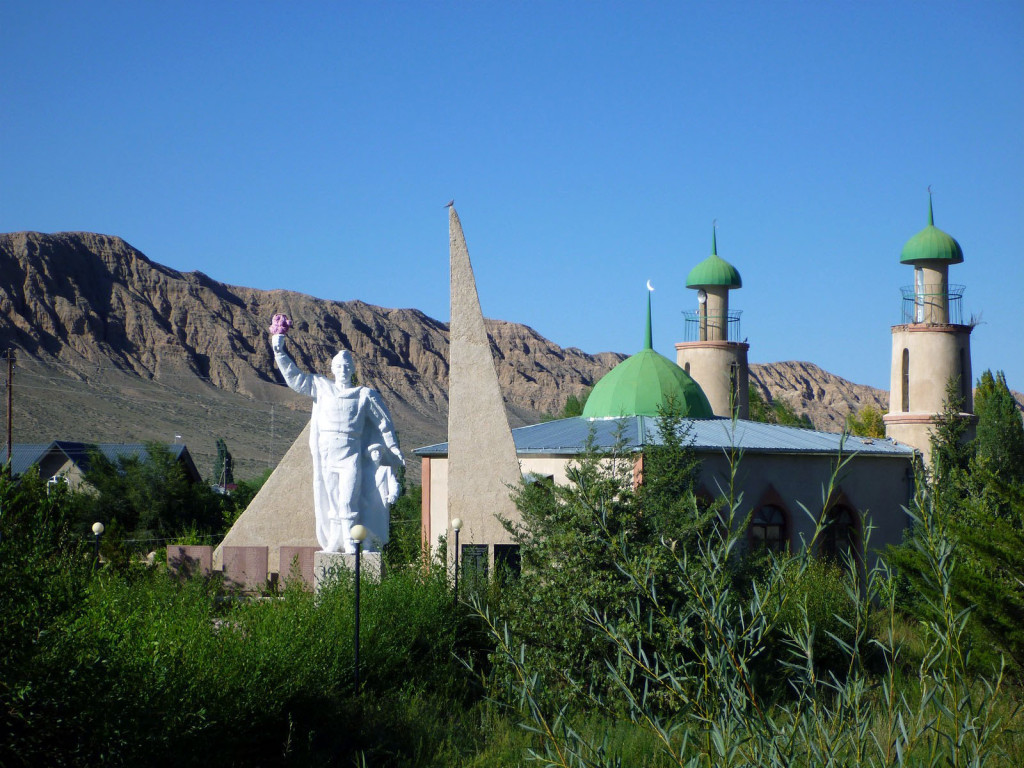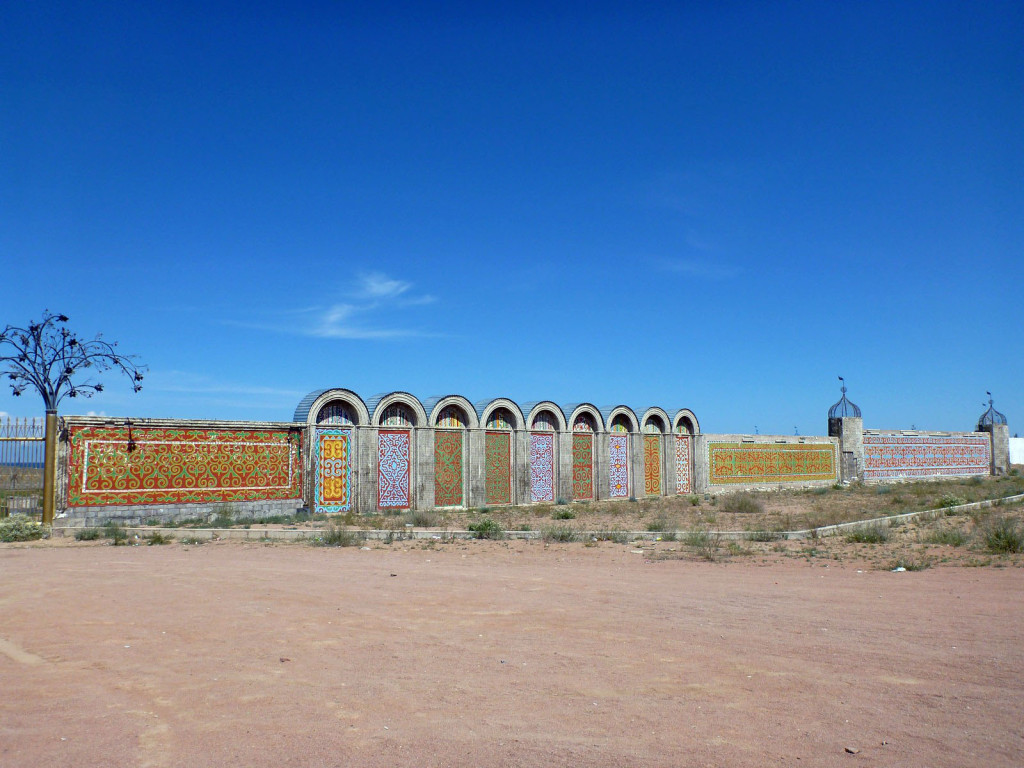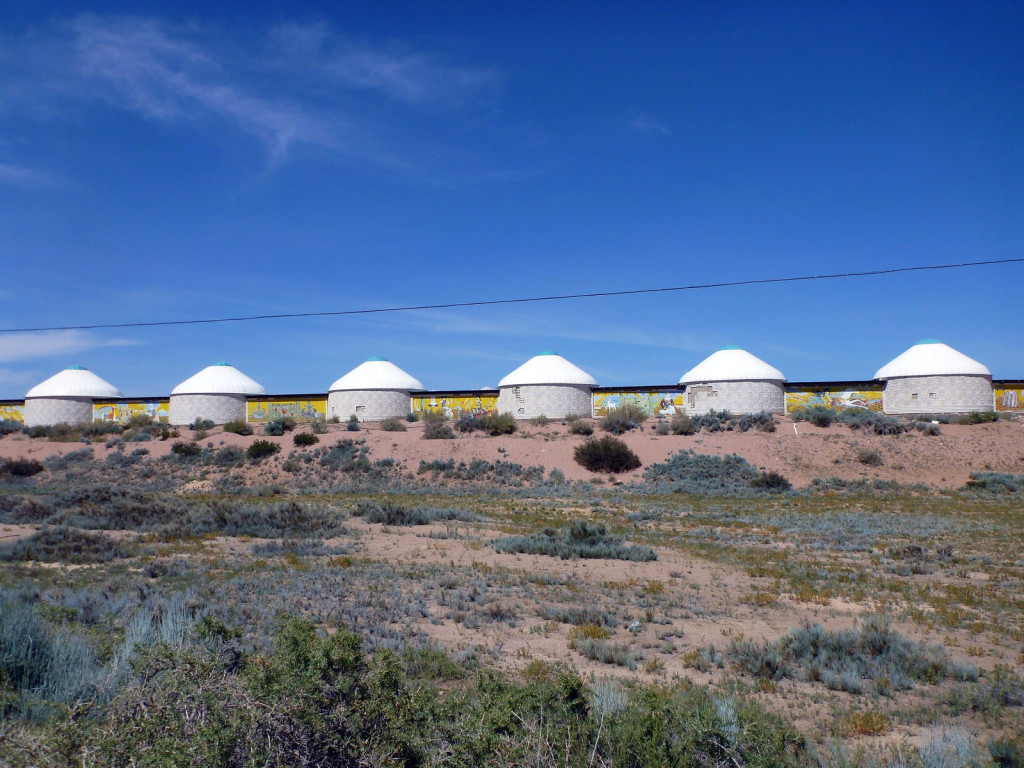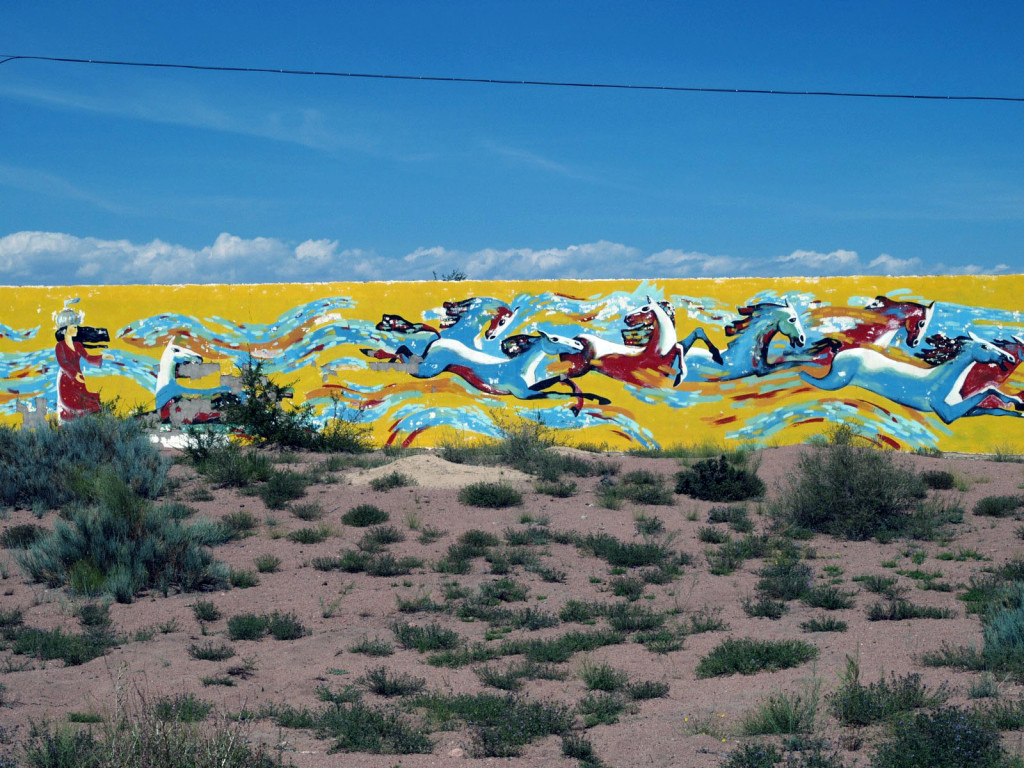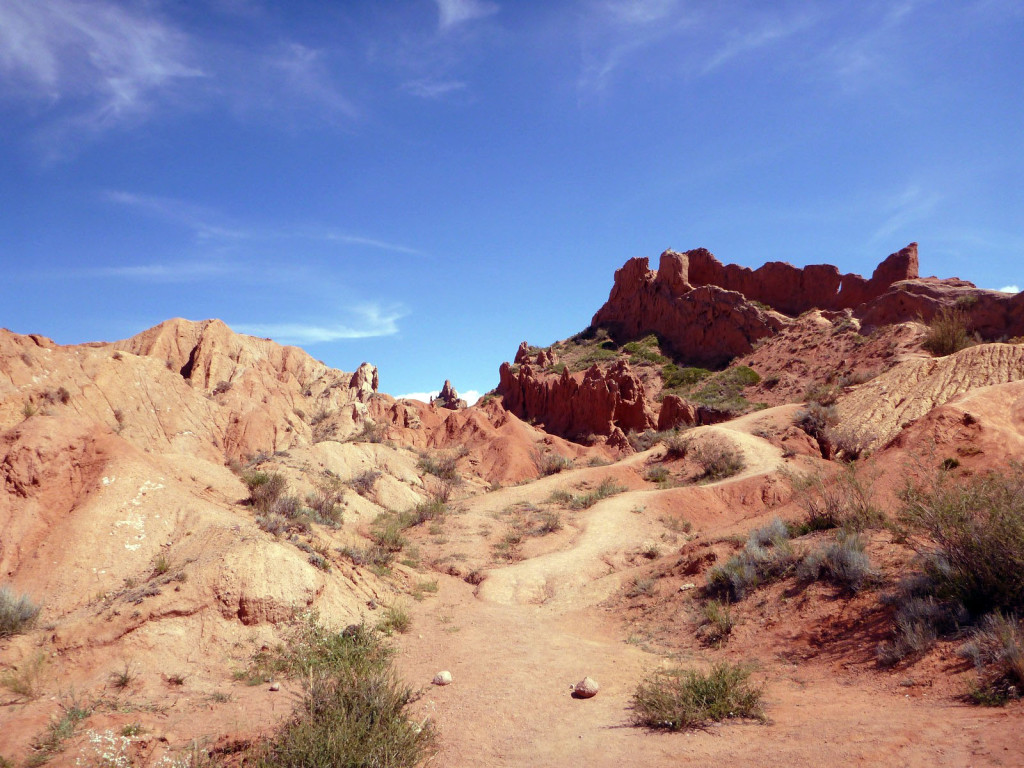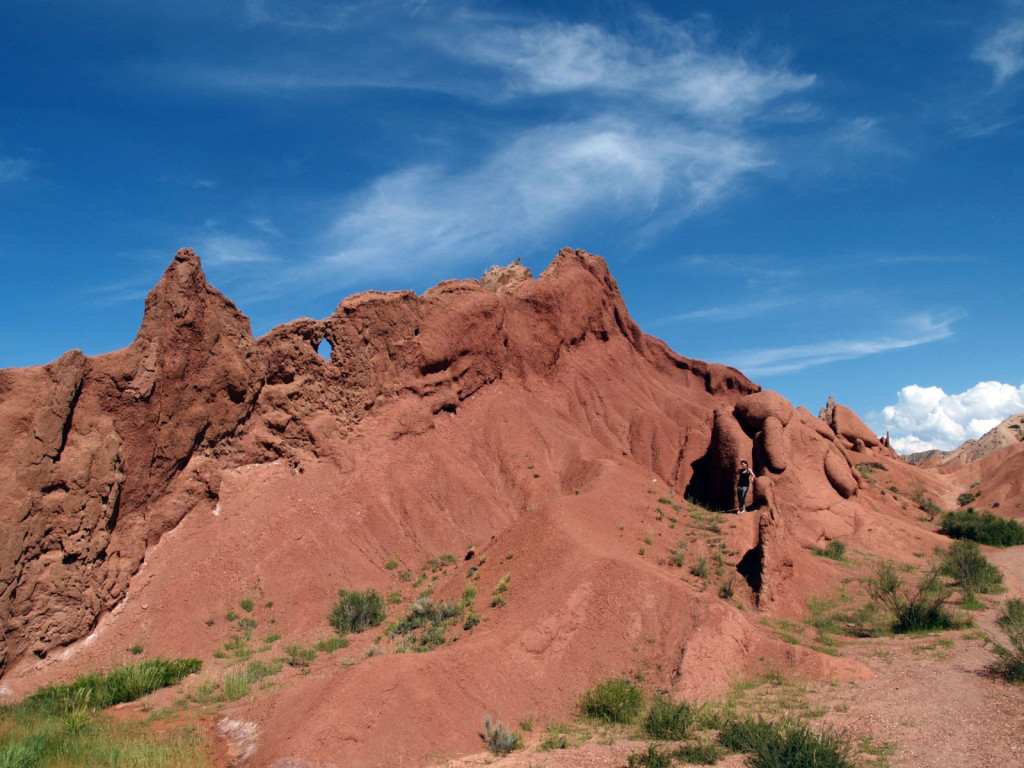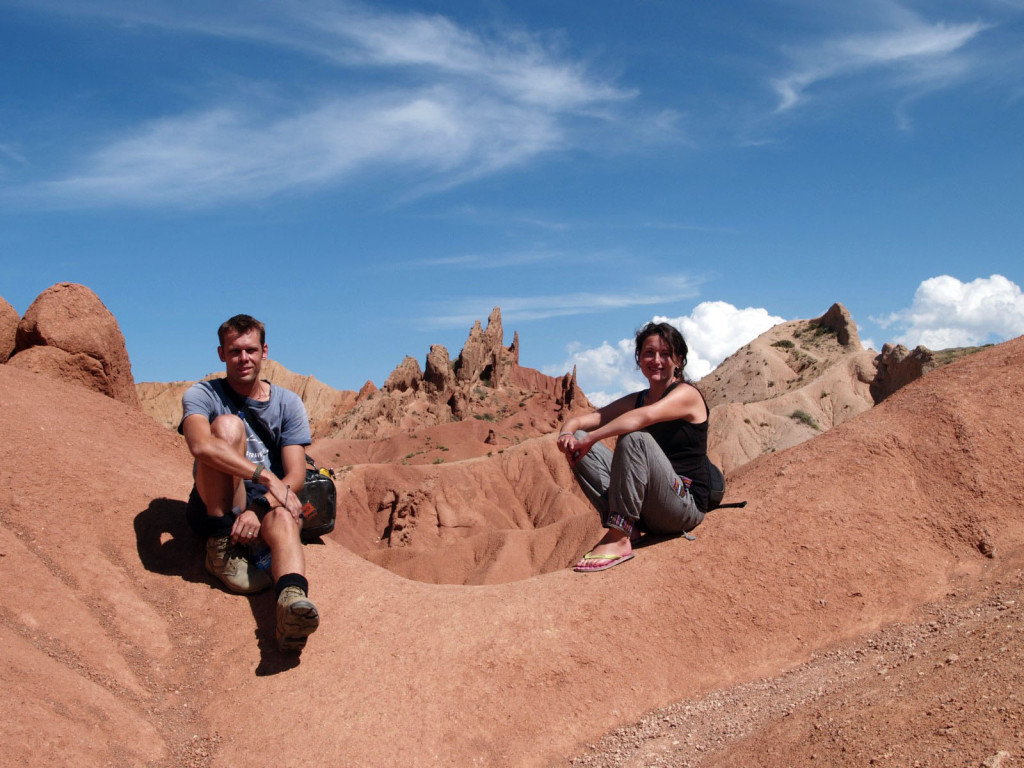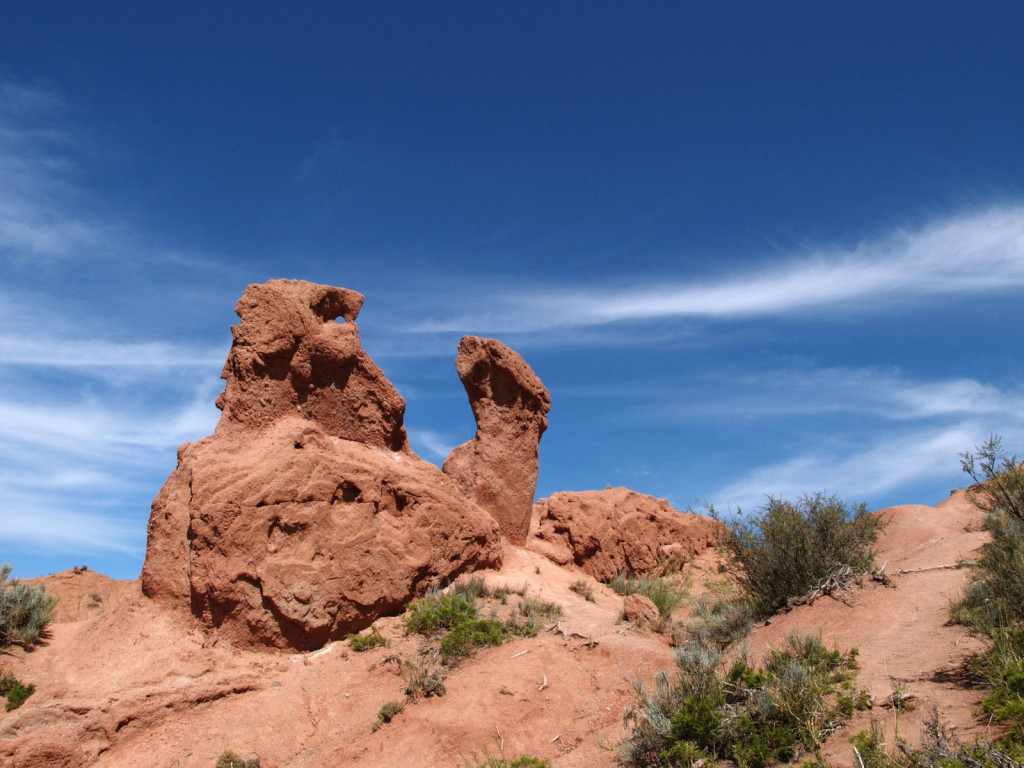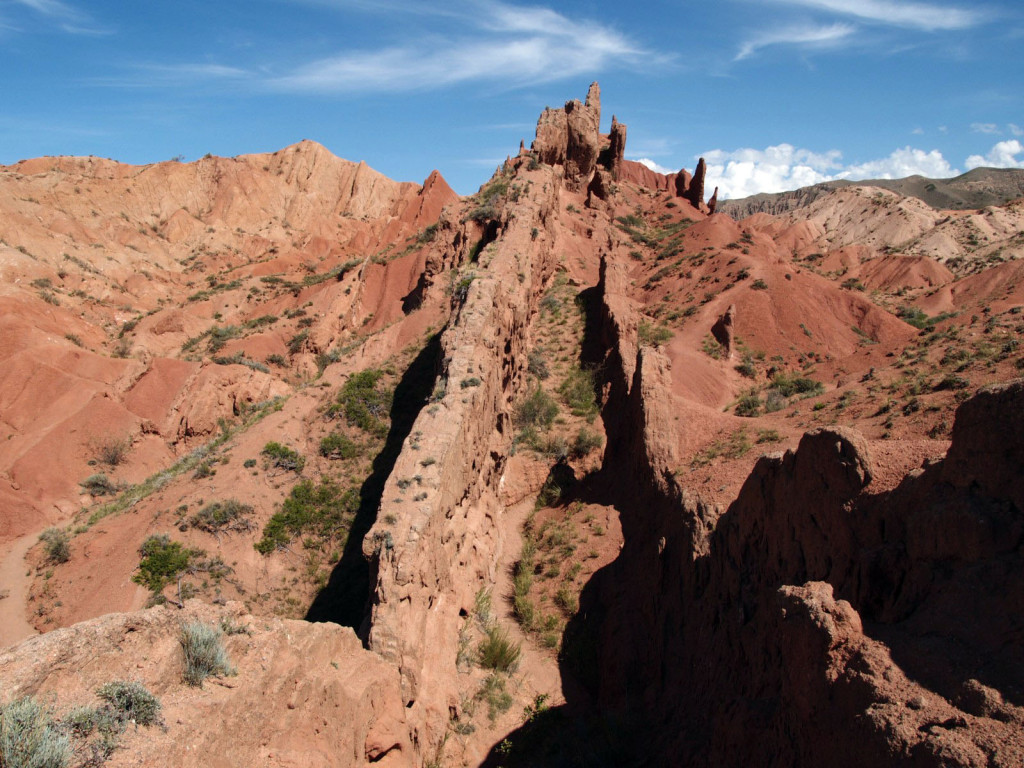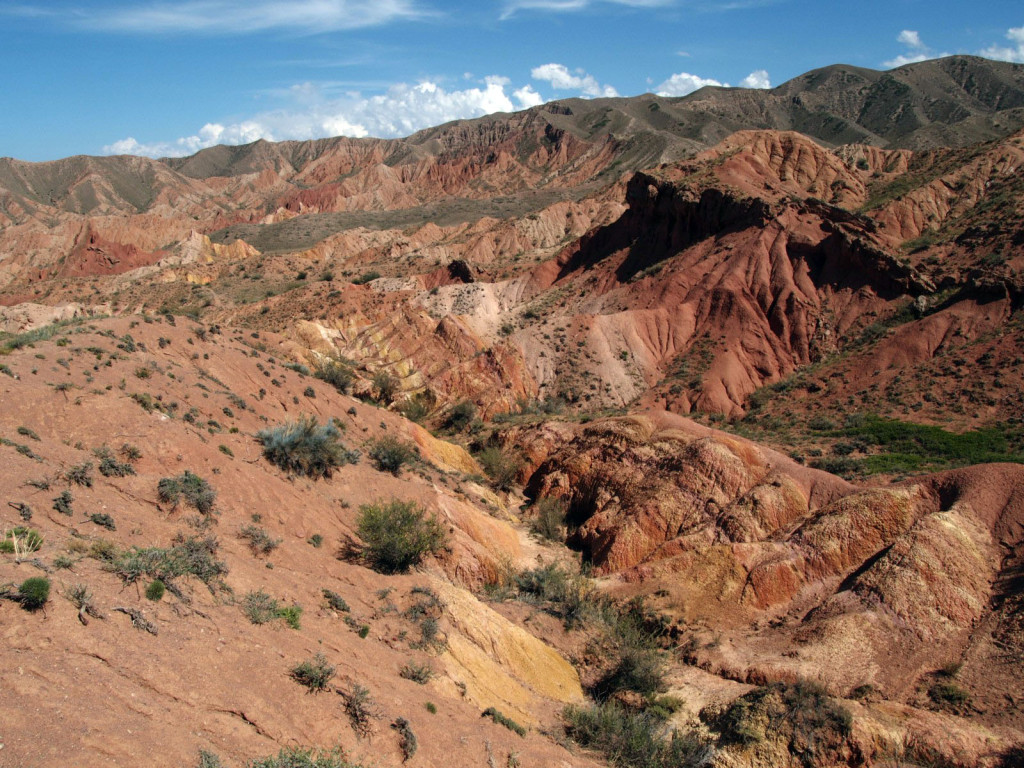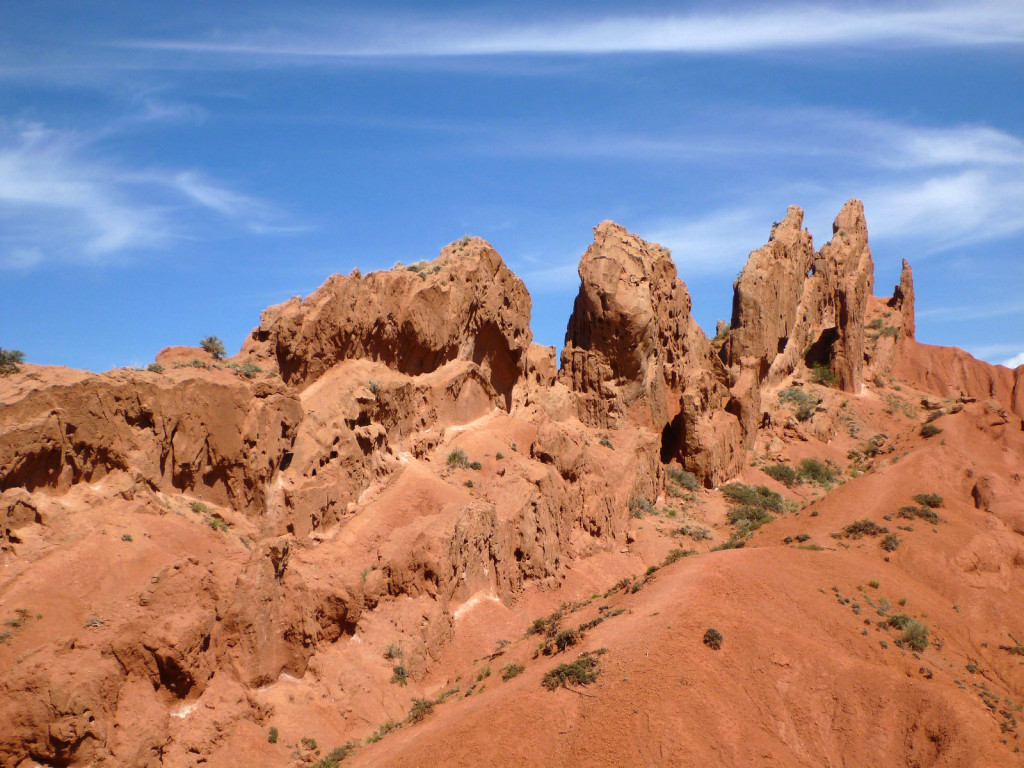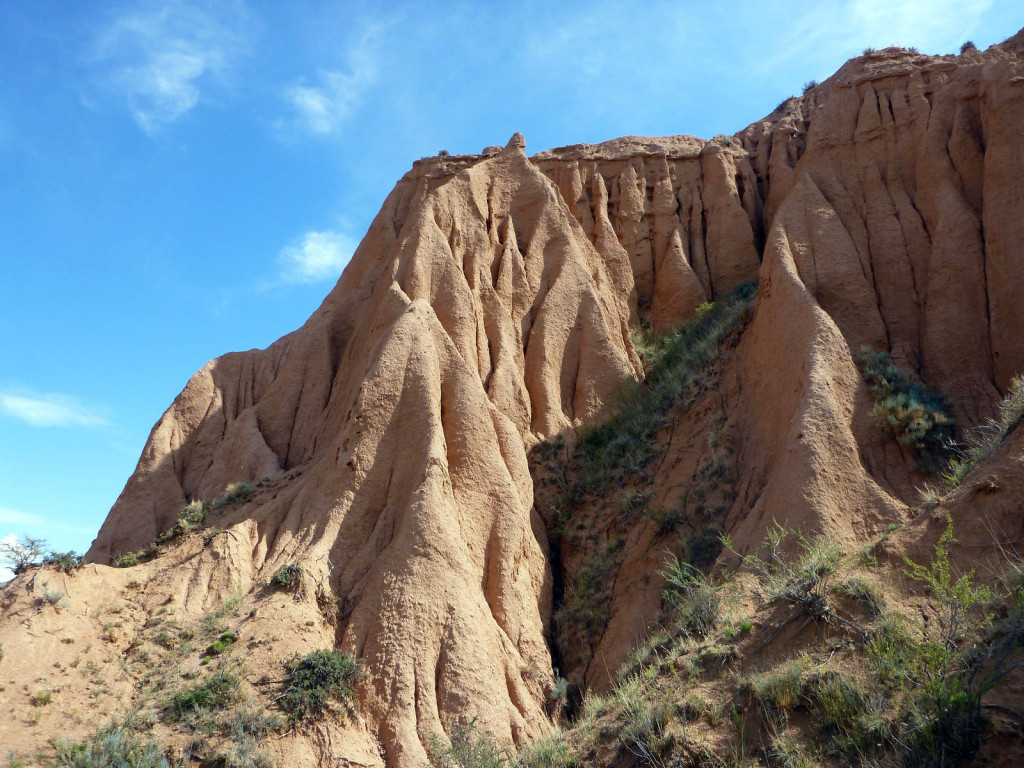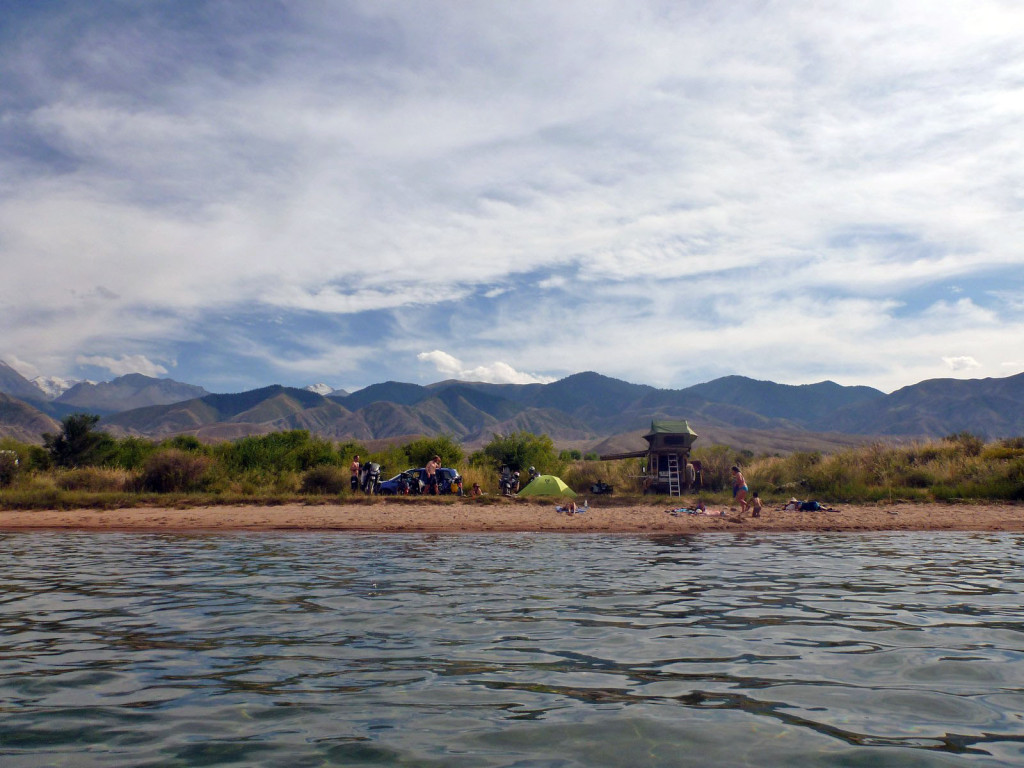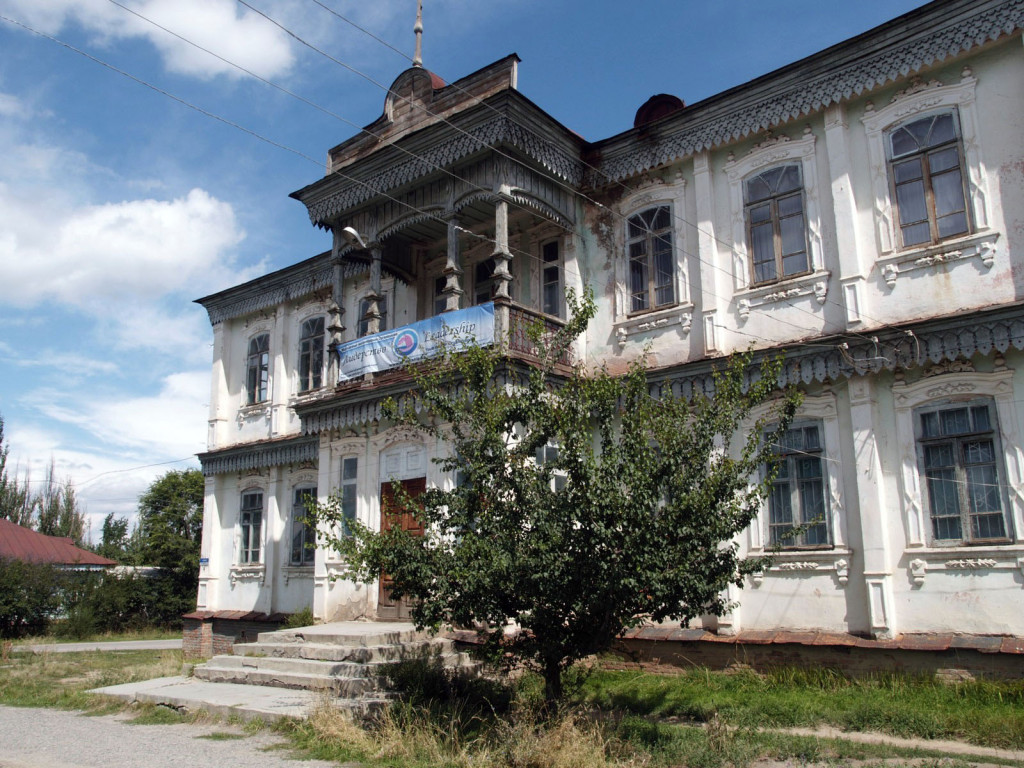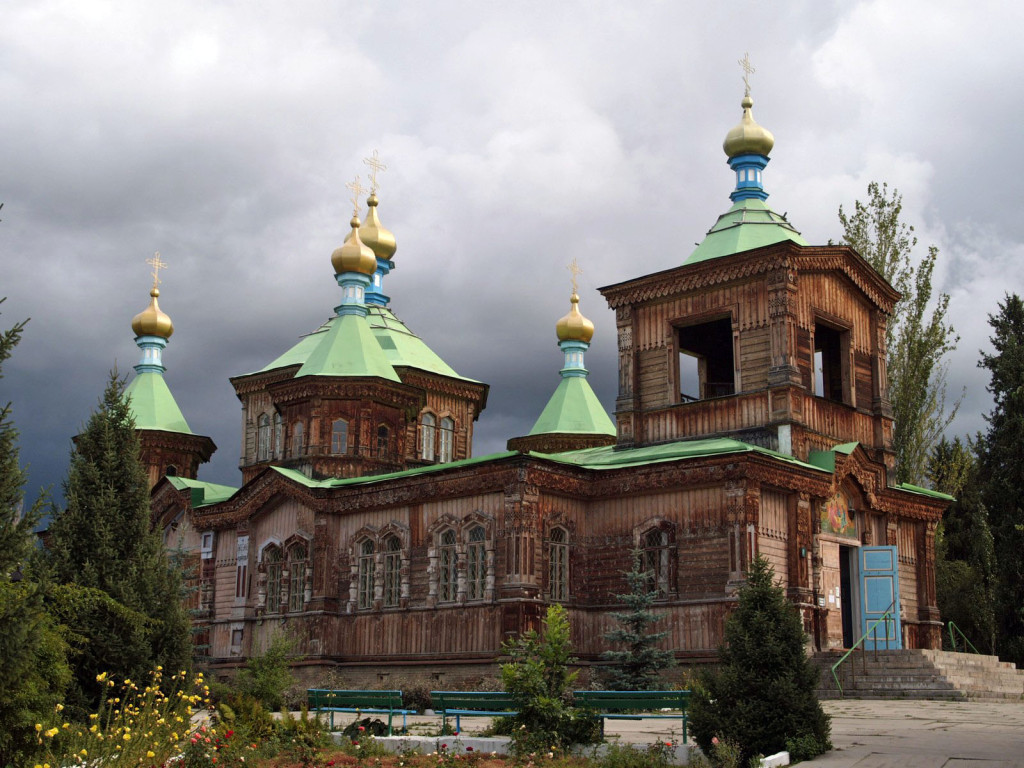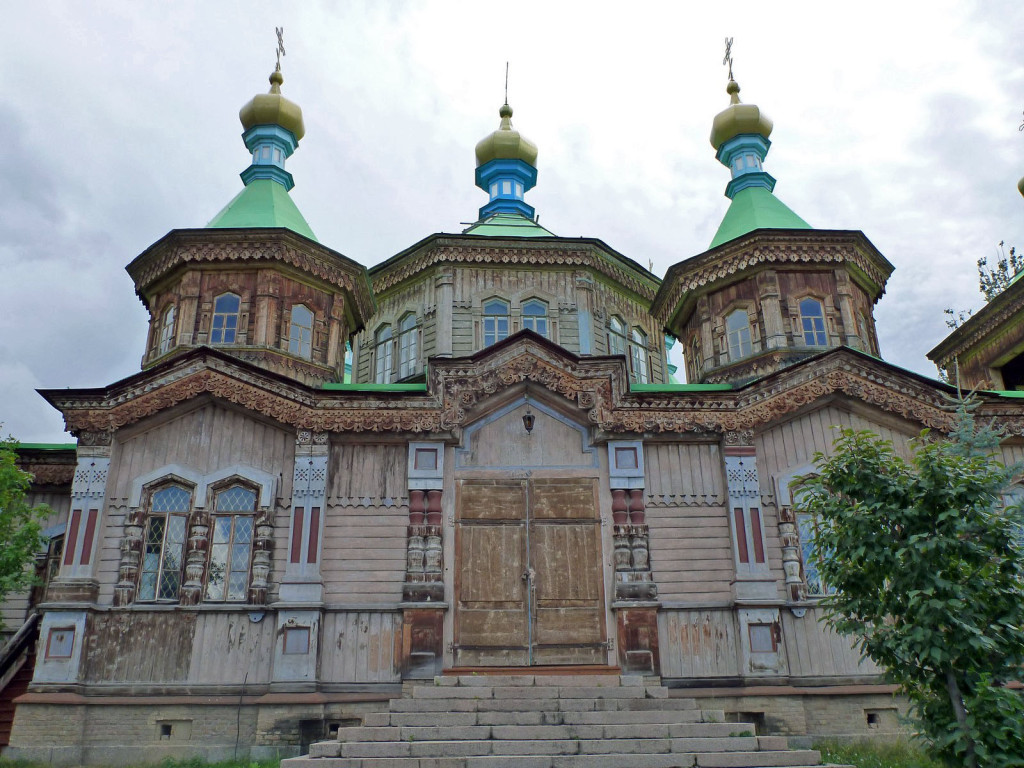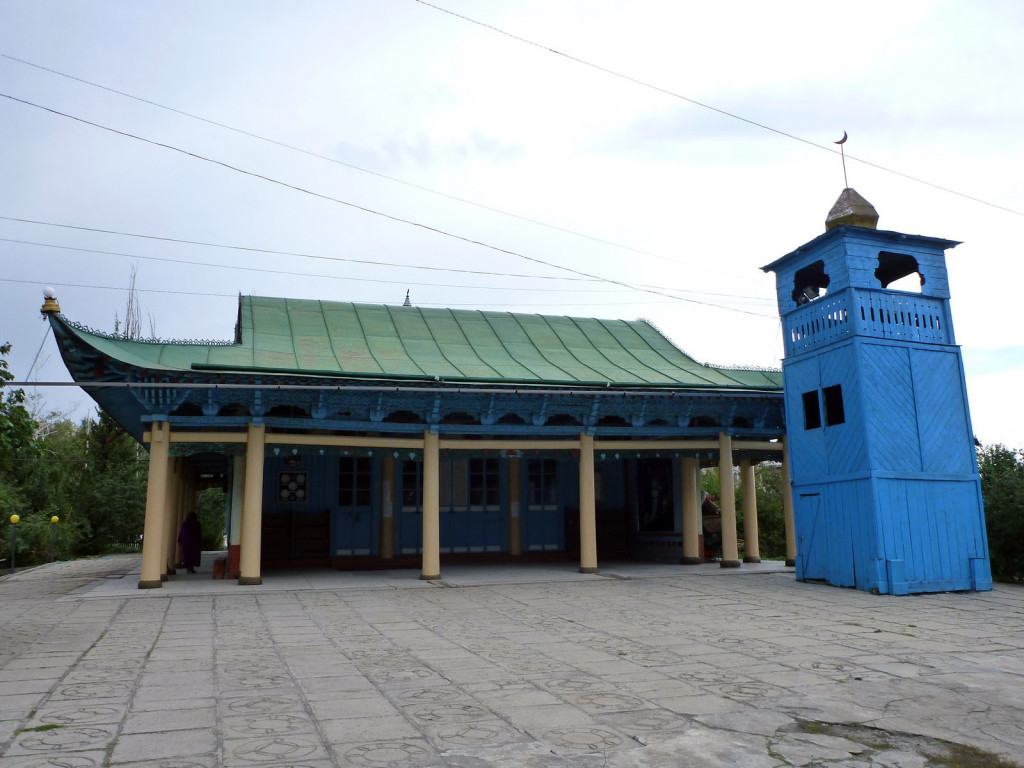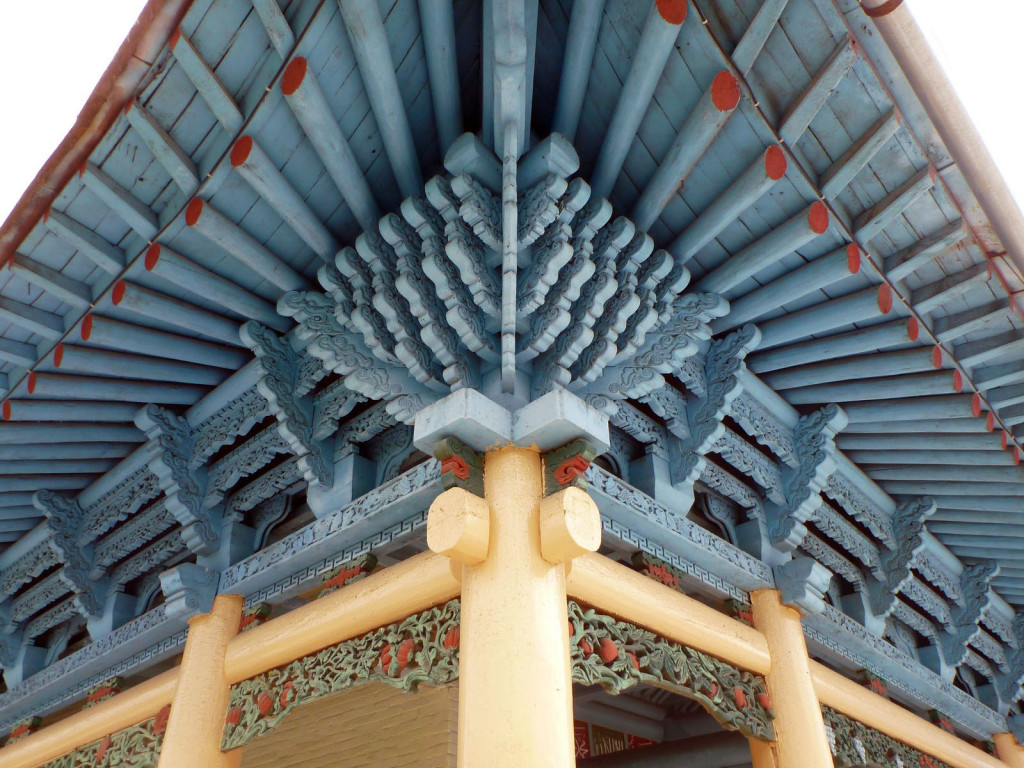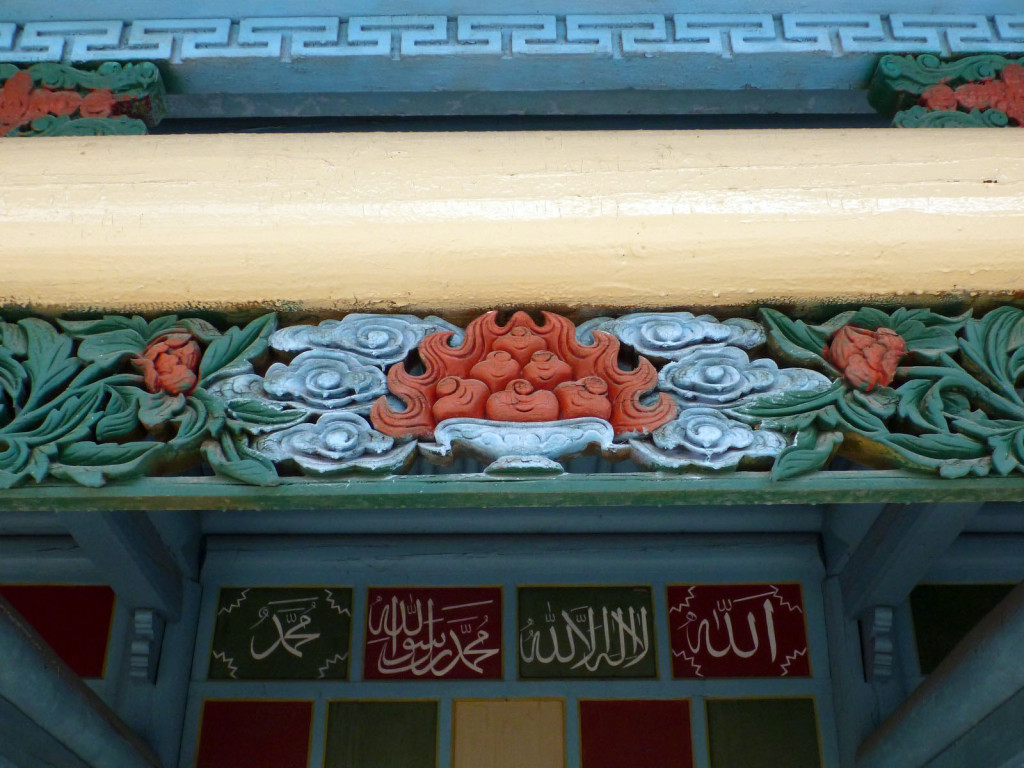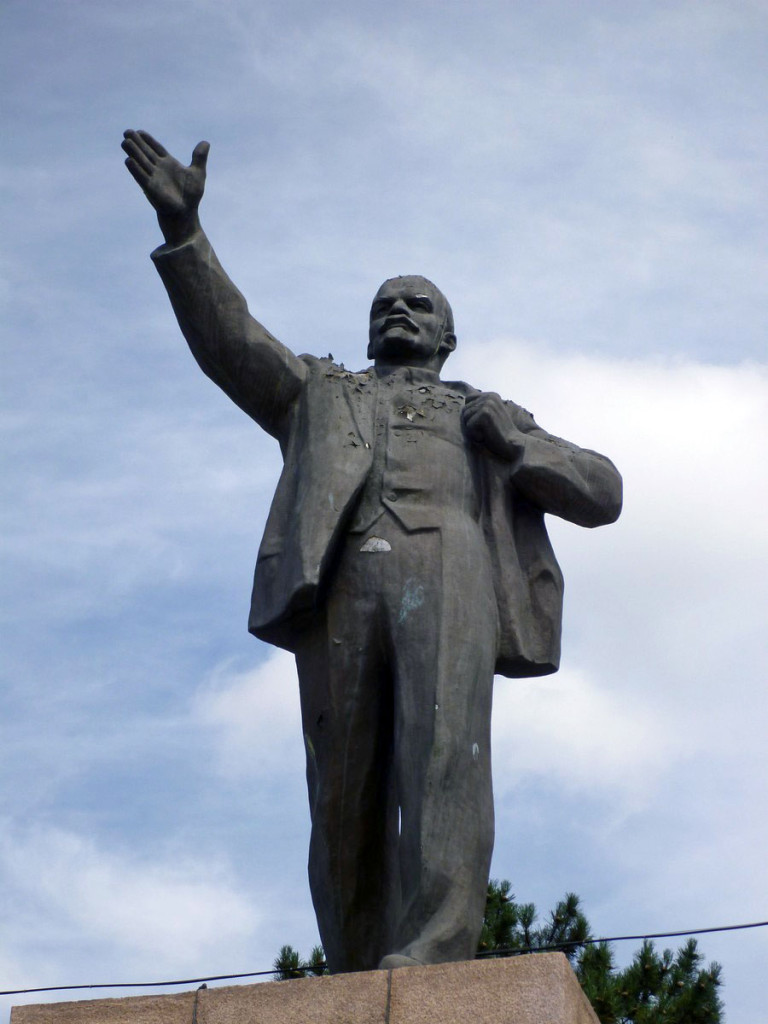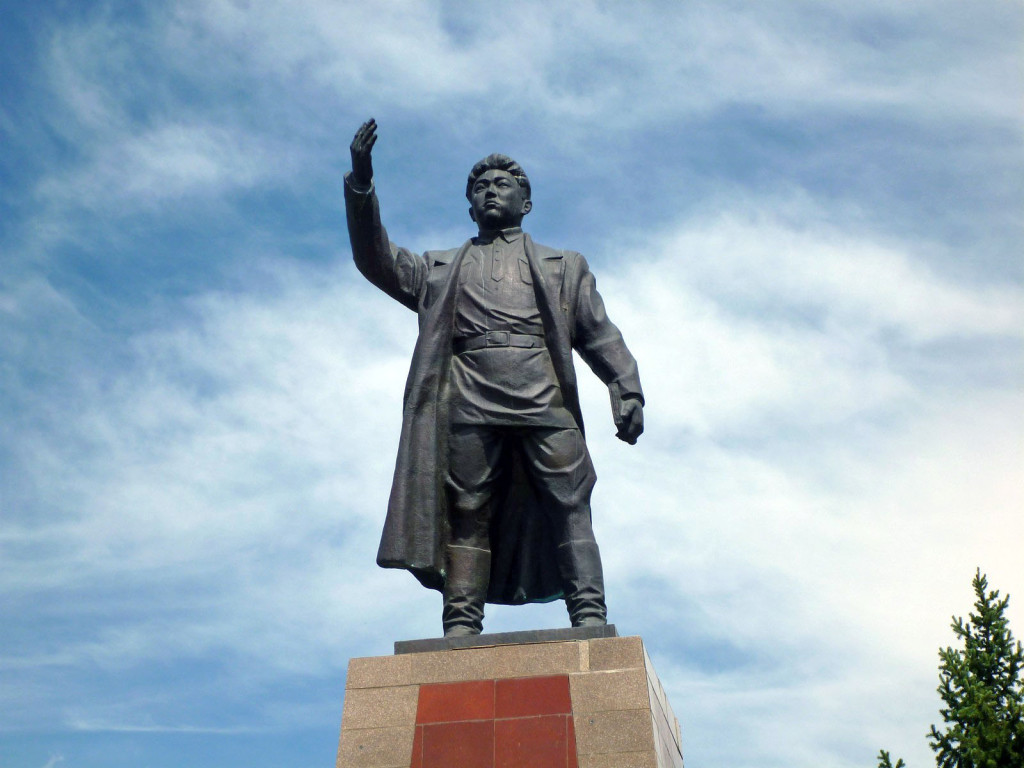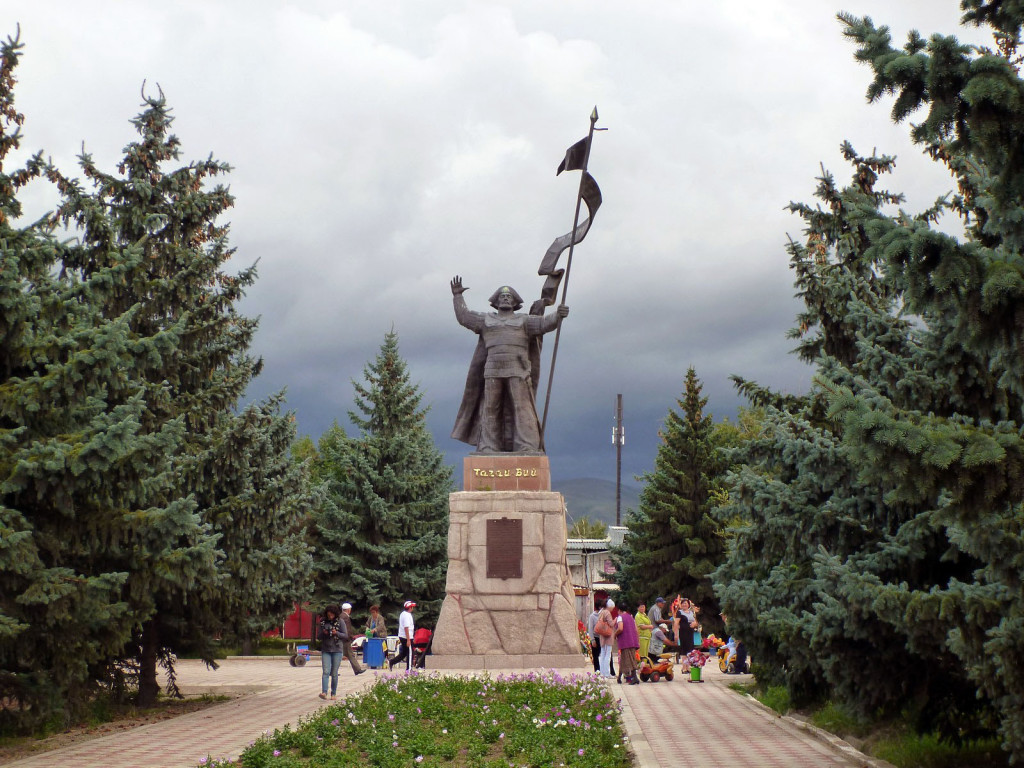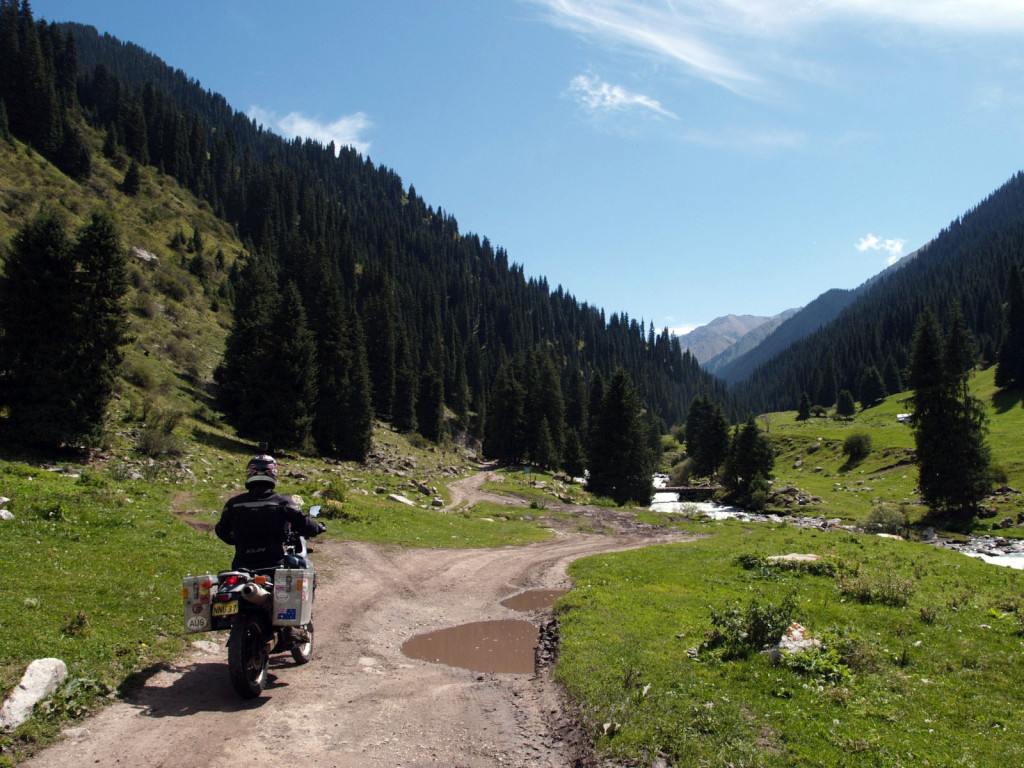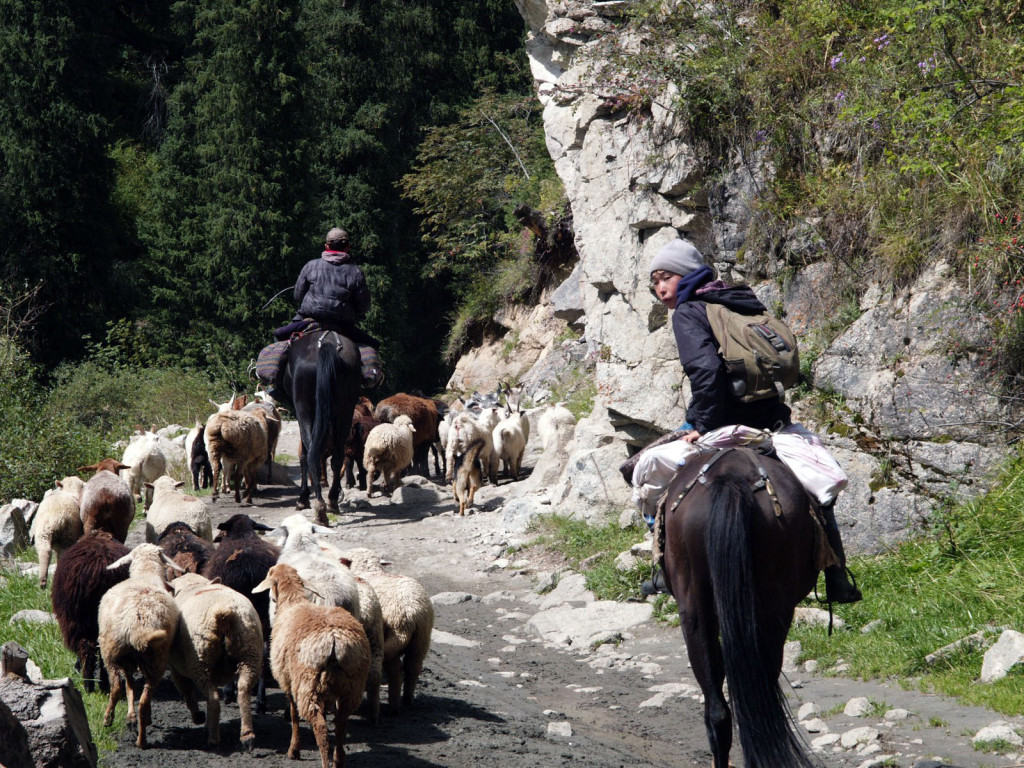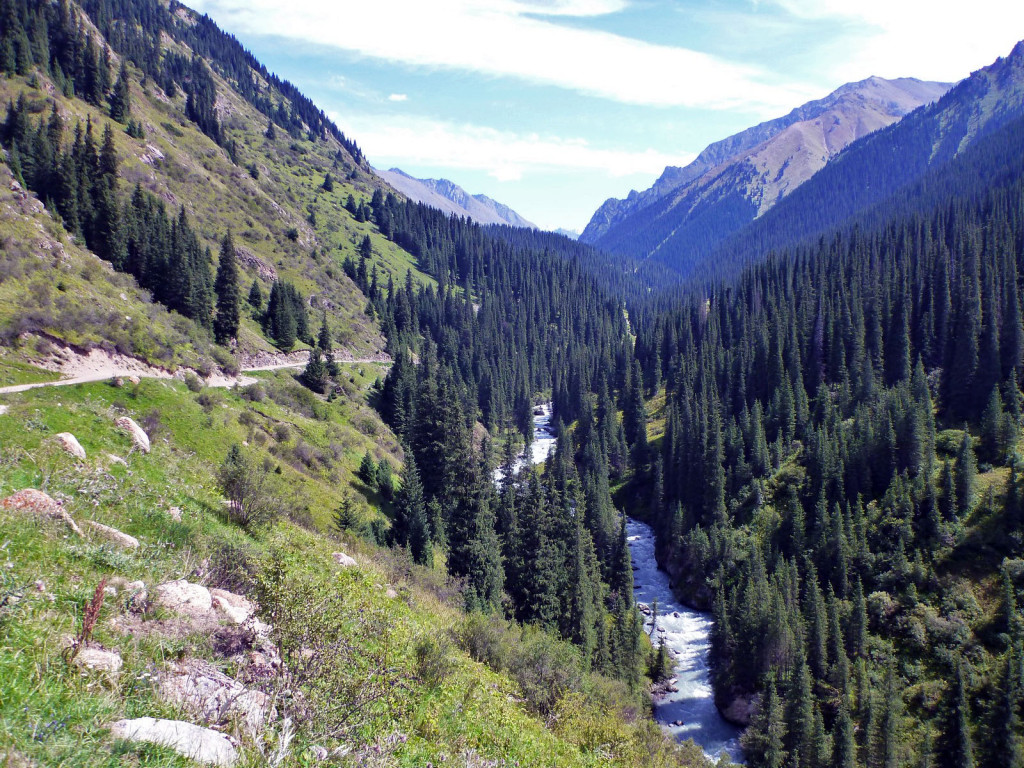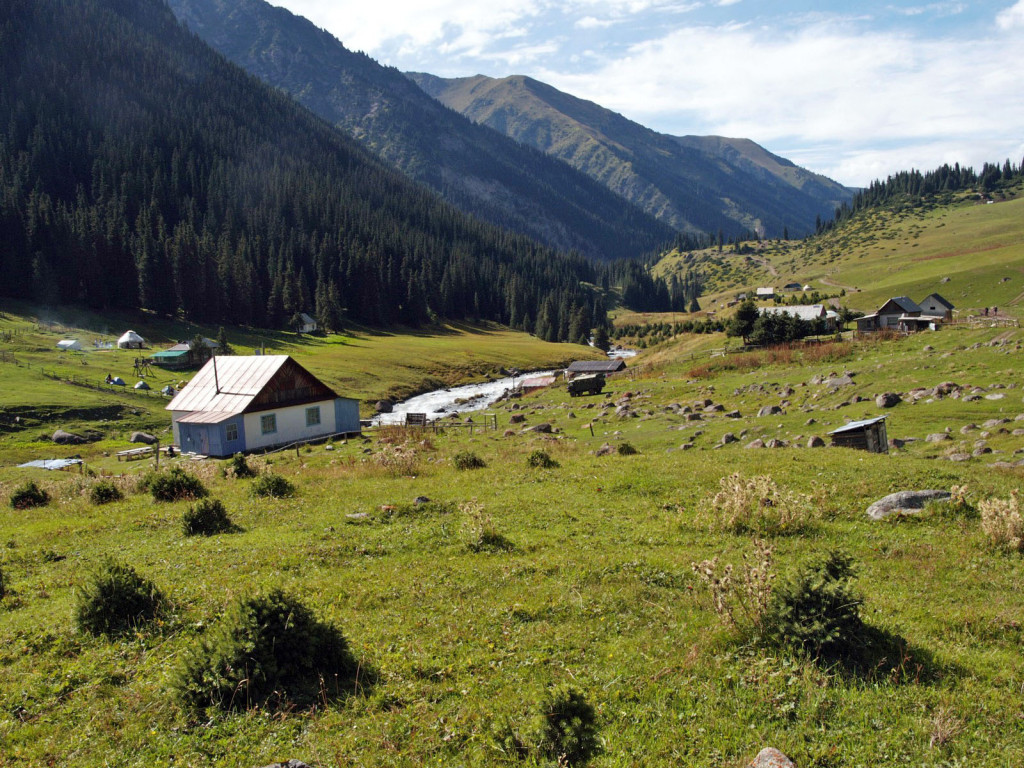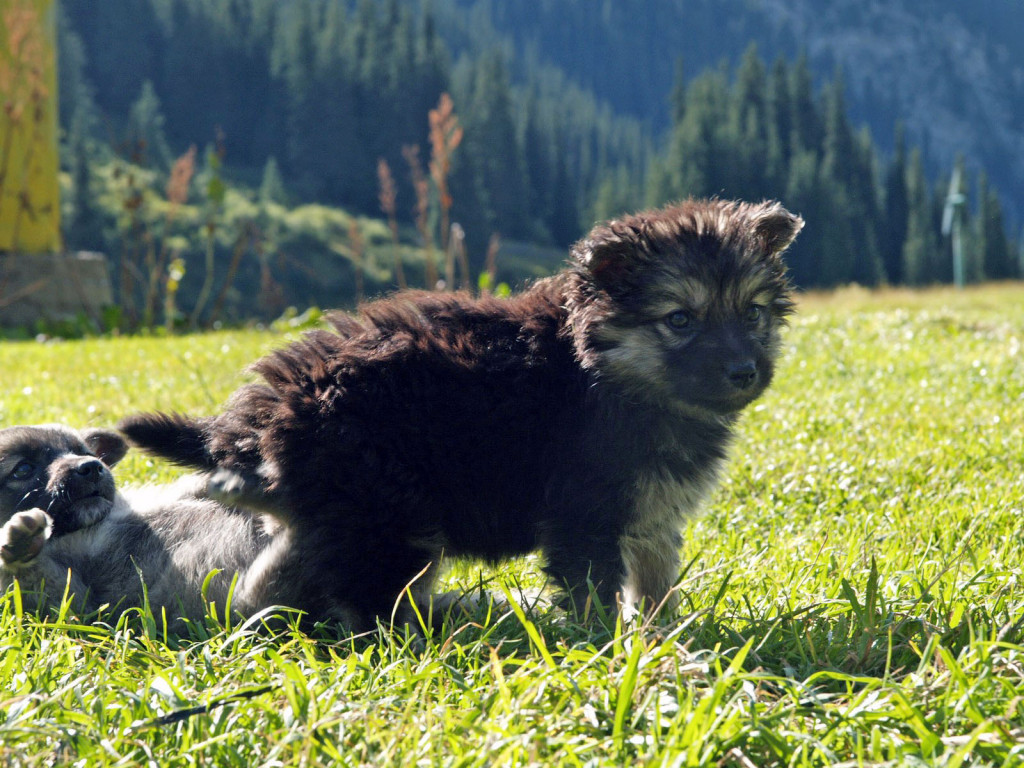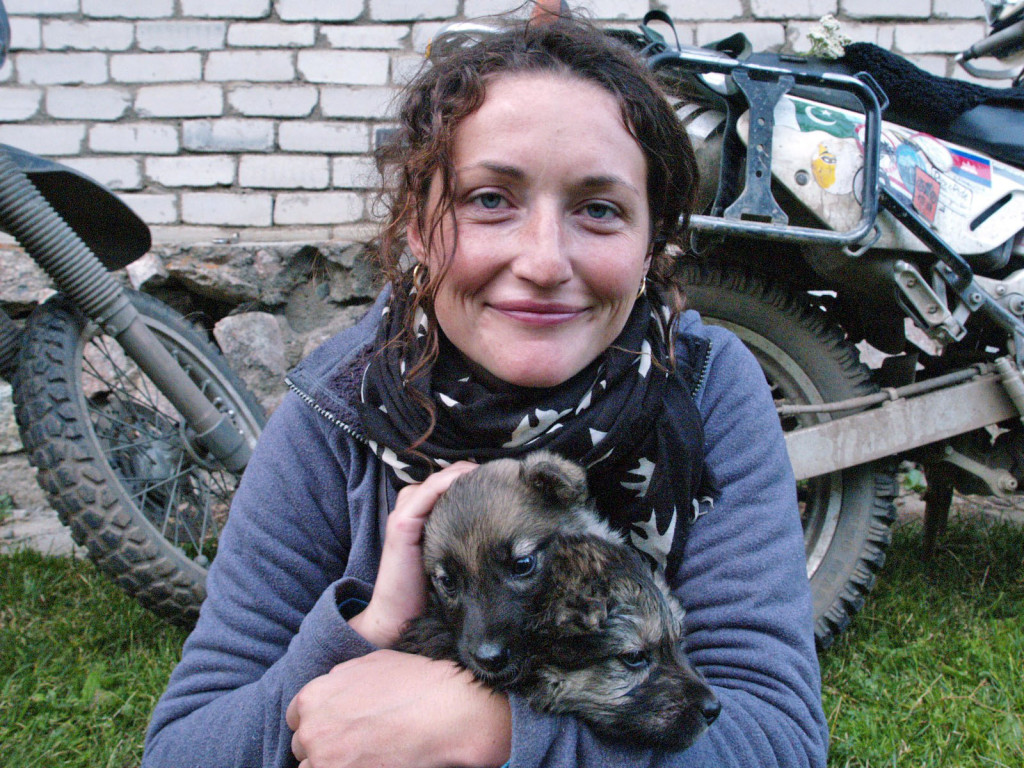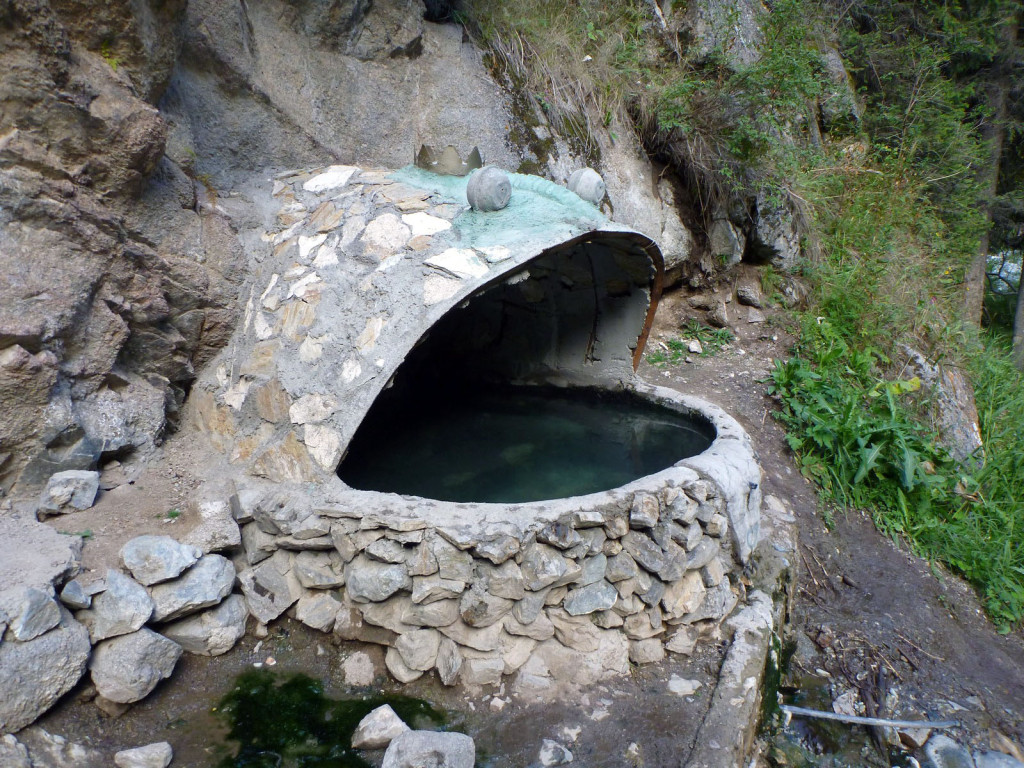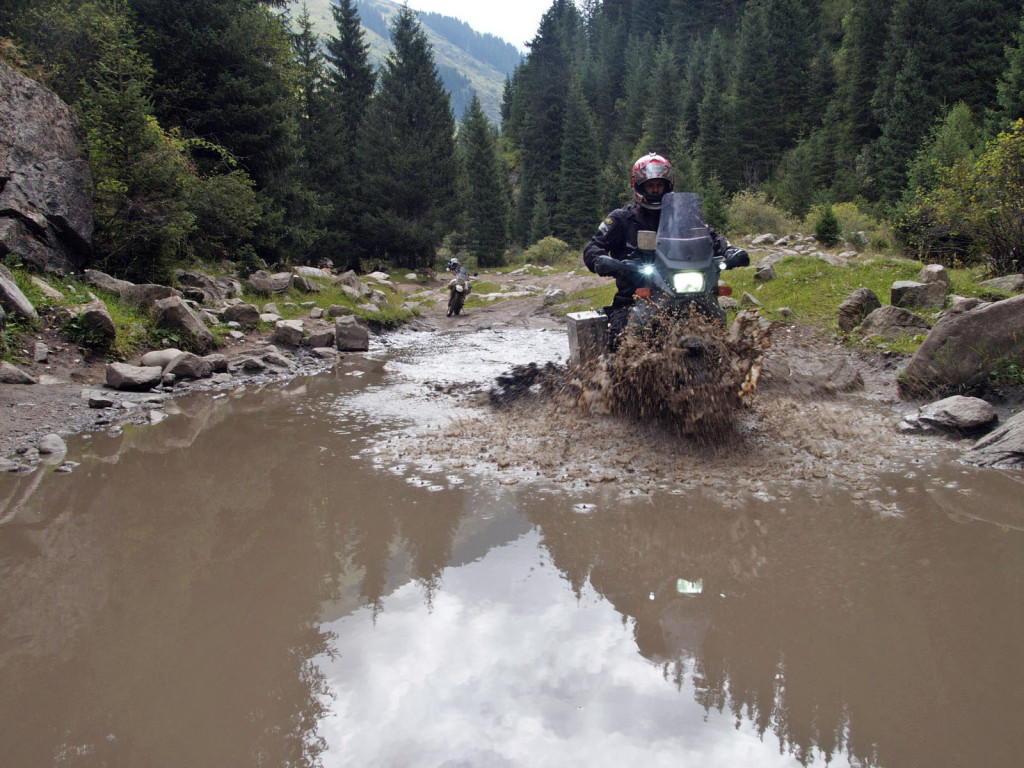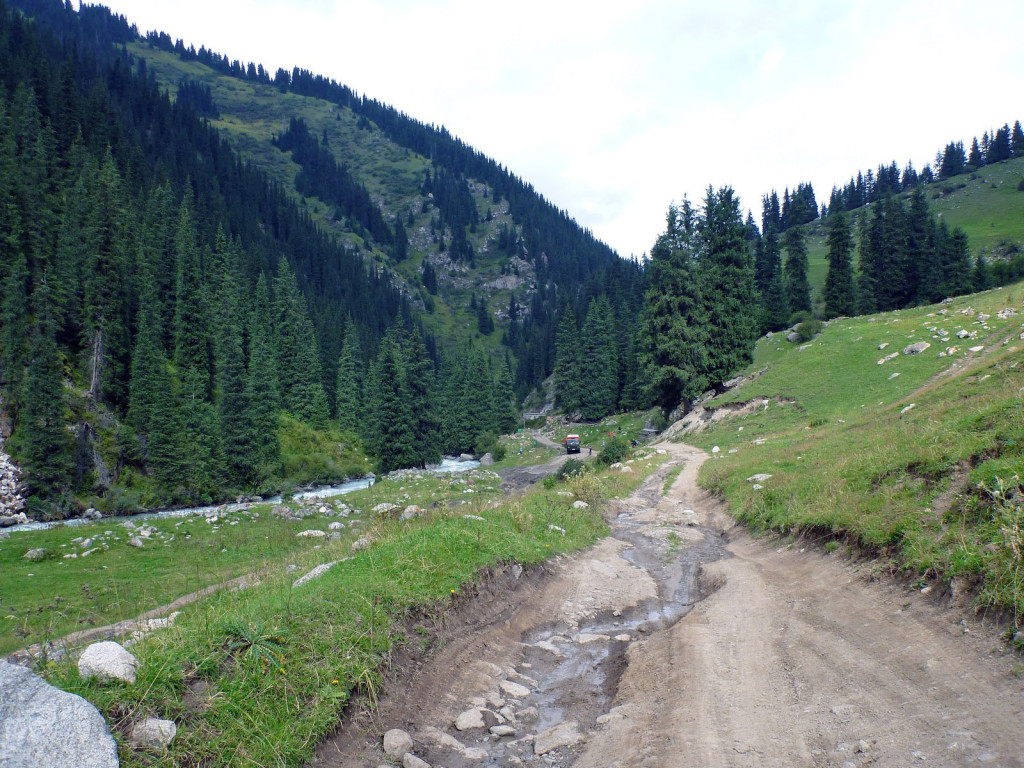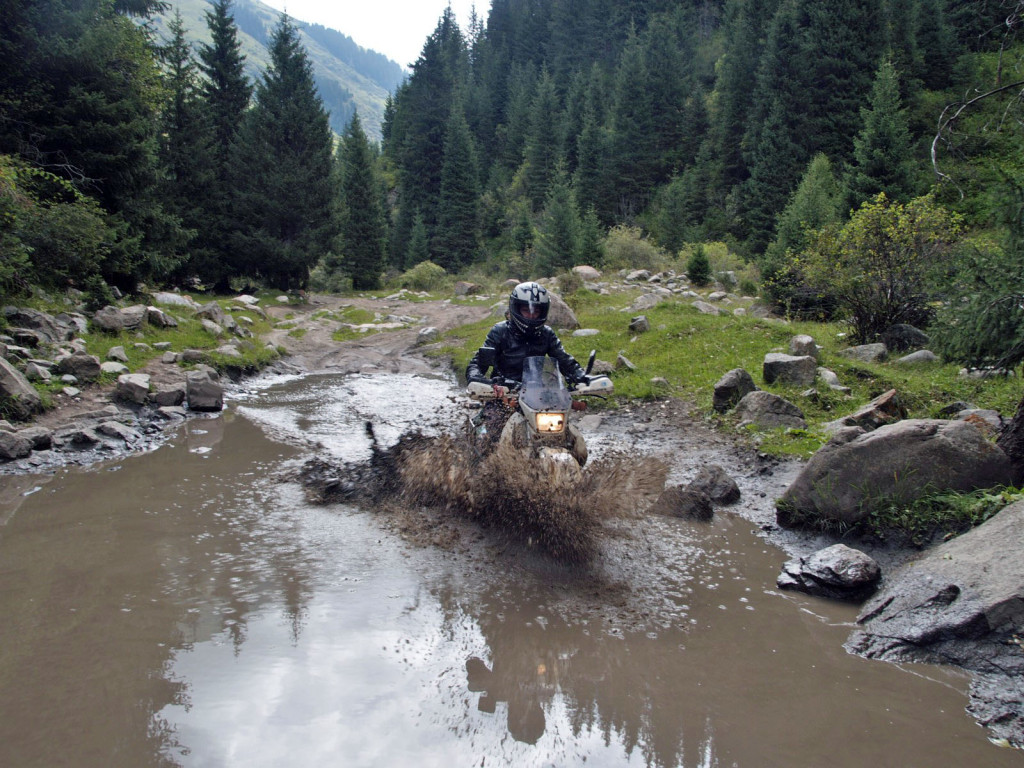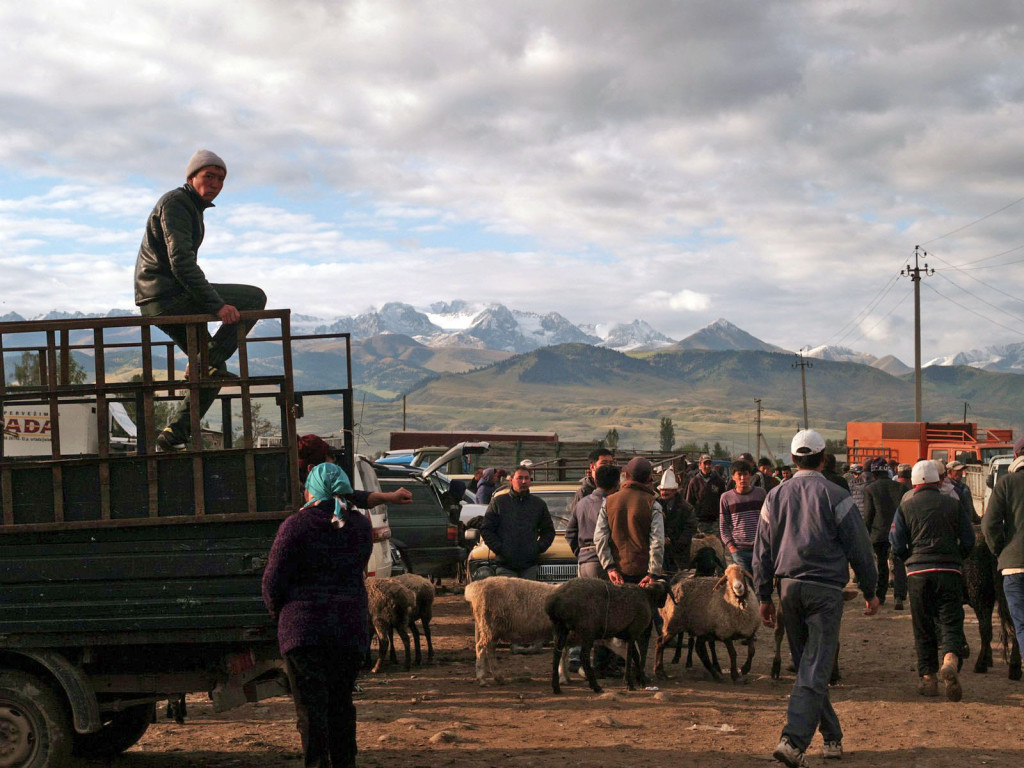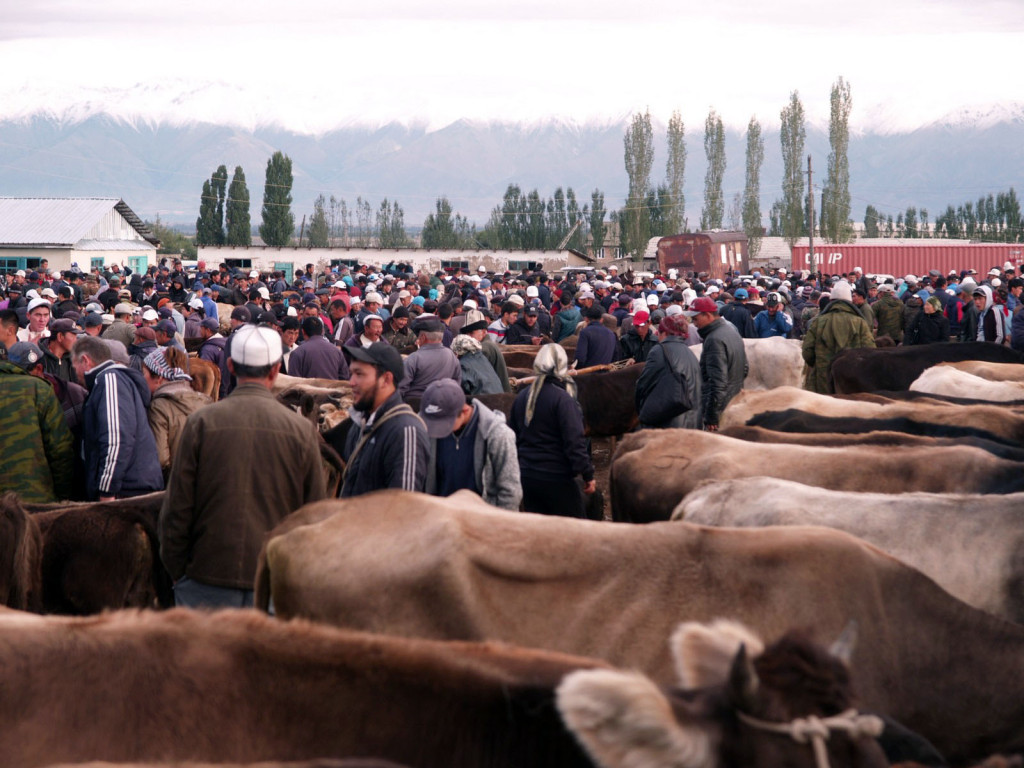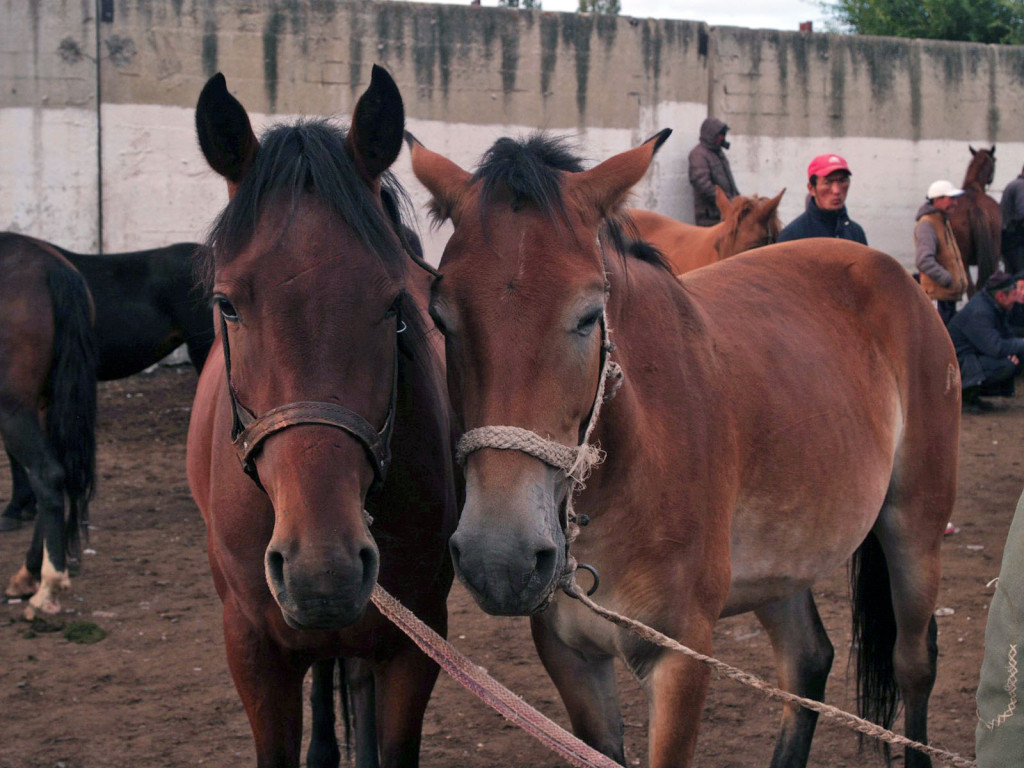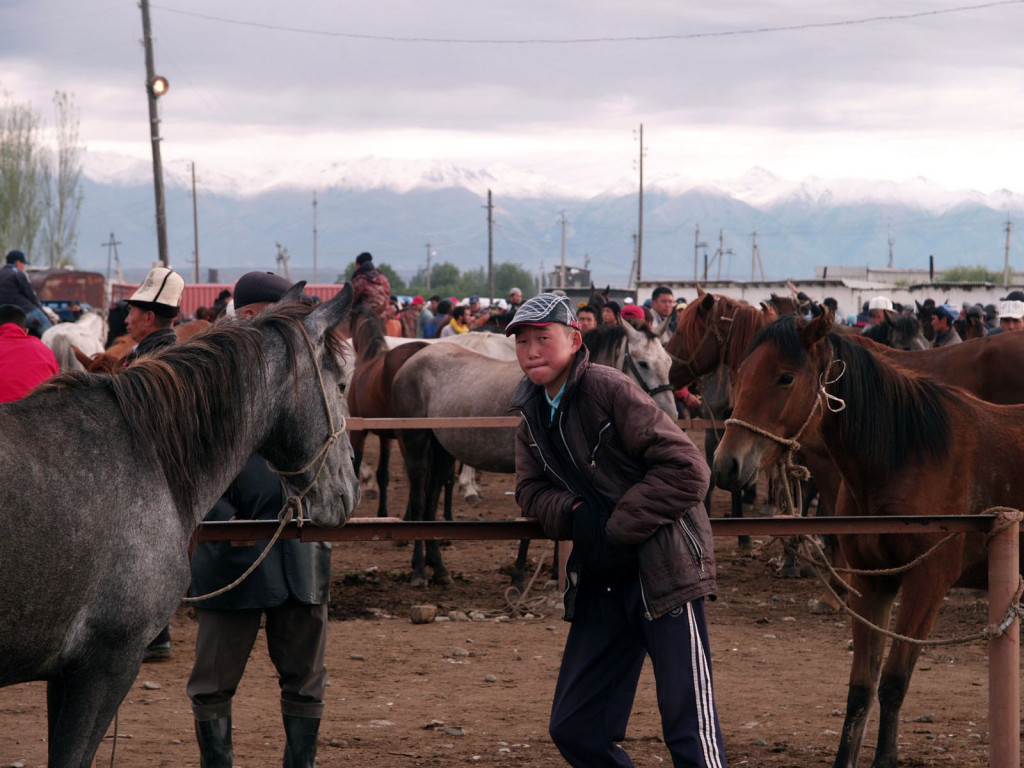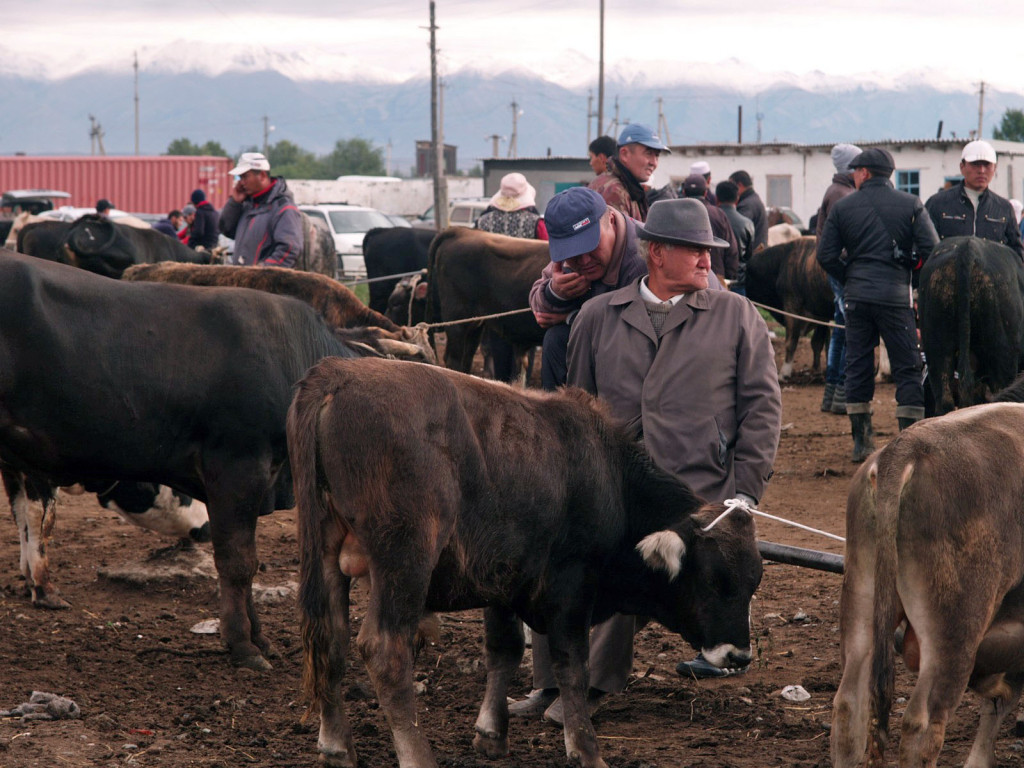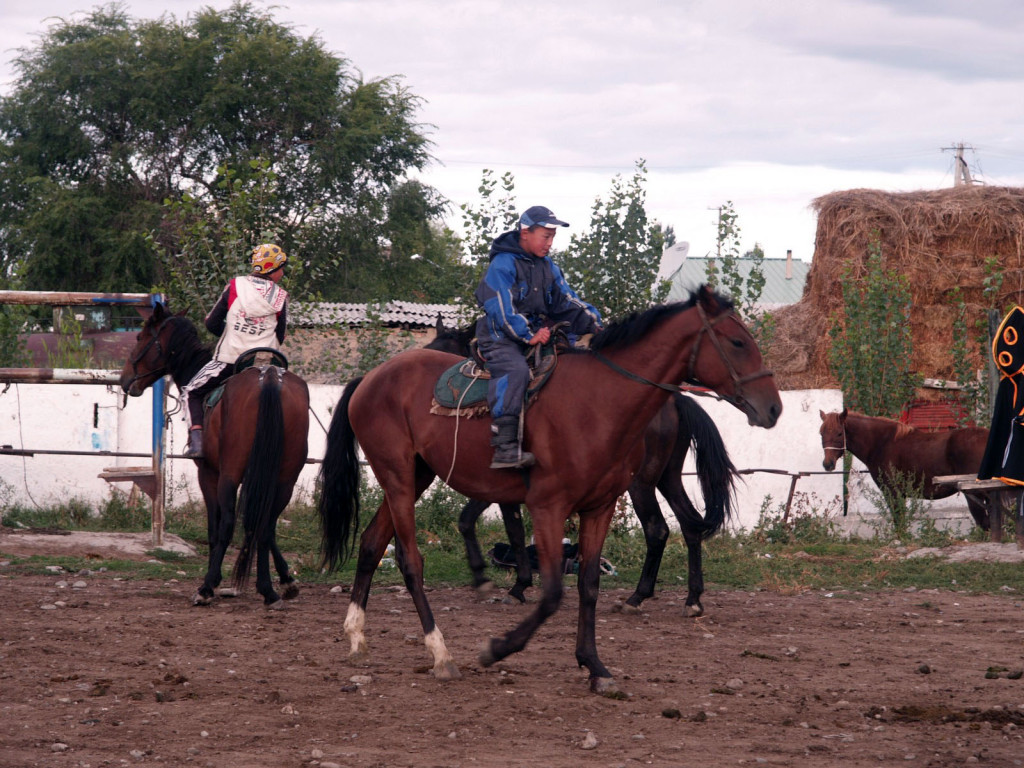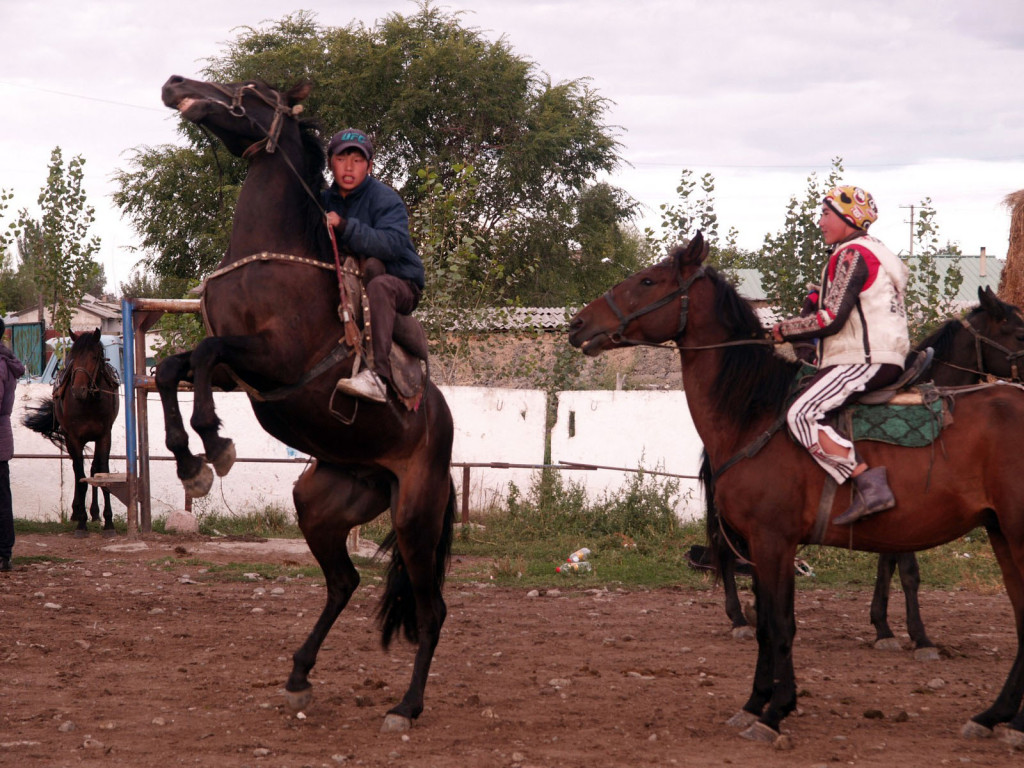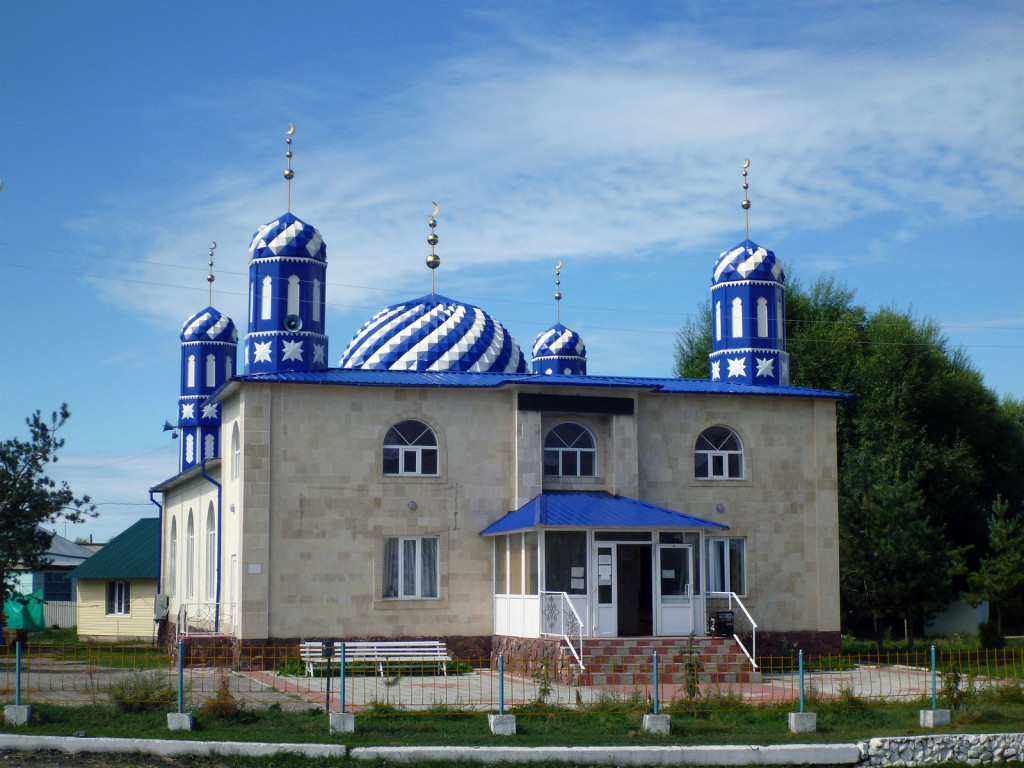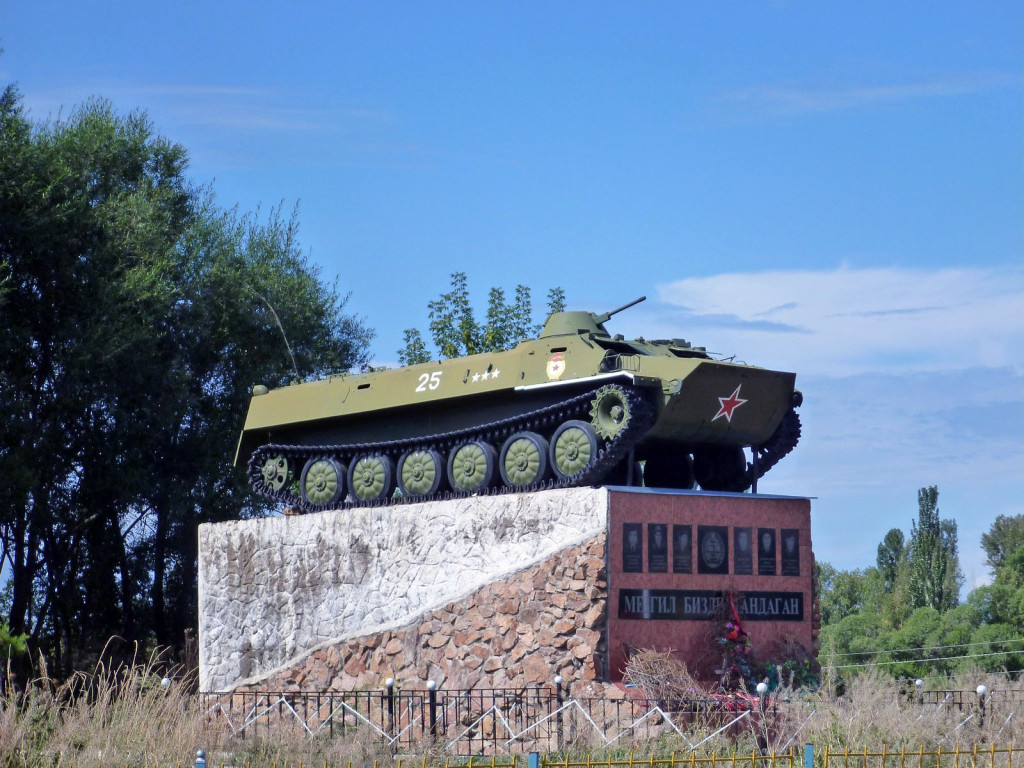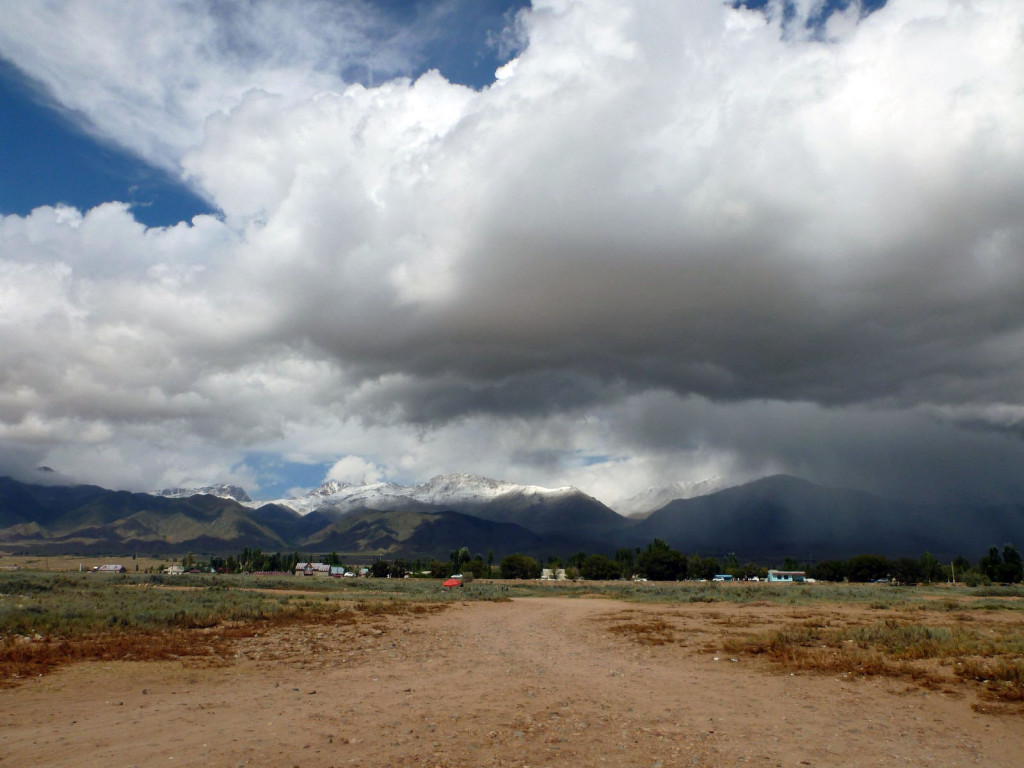Waving goodbye to our temporary yurt home the next day, we headed back through plains, across streams and down mountainsides.
On reaching the first town in the lowlands, just before rejoining the main road, we stopped to regather our group, and met another pair of overland motorcyclists – this would end up being a common theme over the next few days. I don’t know whether it’s because Kyrgyzstan is quite small, or very popular with German motorcyclists, or both, but we saw plenty of big western bikes loaded up like ours. We also attracted a big group of kids.
The countryside continued to unfold as we headed north-east, to the most famous of the country’s lakes – Issyk-Kul.
Ringed on all sides by 5,000m mountains that occasionally show snow-capped peaks through the looming clouds, this is the second biggest alpine lake in the world (after Lake Titicaca). Moderately saline, it never freezes in winter, although calling it ‘warm’ is something of an overstatement. It’s large enough that it has its own microclimate, warmer and less cloudy than the surroundings. Hugely popular with Russian and Kazakh tourists, we started our loop along the southern shore.
More USSR monuments and statues populate the shores.
At one point along the road, there’s a vaguely industrial-looking compound, ringed by a series of strange, decorated walls – including murals and faux yurts.
Further along the road is the aptly-named ‘Fairy tale canyon’, where centuries of wind have eroded the sandstone into strange shapes and patterns.
That night we met back up with some of our previous companions purely by chance, and camped on a beach together – sharing $2 bottles of local vodka and falling asleep to the sound of gently rolling waves.
The town of Karakol would be our base for the next few days, as we waited through the weekend for our paperwork to arrive. A garrison town for Russian troops dating from the 1860s, there are a few interesting buildings (particularly the old wooden church and mosque), but it’s fairly plain.
Dozens of Soviet-era statues are dotted around the streets, ranging from Lenin to historical locals.
One of the local attractions is a set of hot springs up in an alpine valley behind Karakol – Altyn Arashan. The road there, however, is perhaps the worst we’ve seen on the whole trip – quickly degrading into enormous mud puddles, rock gardens a hundred metres long, and slippery slopes. We both fell multiple times, and took several hours to cover the 12km to the top. It seemed much easier for the hikers and the locals on horseback.
We were rewarded by a small camp with a few houses, a pair of adorably cute puppies, and some slightly underwhelming but still enjoyable hot springs, shaped like a frog and perched next to the raging river.
The road out was easier than in, since gravity helps take you downhill, but it was still not uneventful.
Our reason for staying around Karakol for a few days was to see the Sunday animal market, one of the biggest in Central Asia. Hundreds of sheep, cattle and horses are paraded, poked and prodded, before being stuffed unwillingly into the back of small Ladas or light trucks.
The horses in particular are often demonstrated or tested vigorously, despite the crowds of people and livestock a few metres away.
We waved goodbye to Karakol and headed around the north side of the lake to the capital, Bishkek. The lake seems to have its own microclimate, warm and sunny, even when the surrounding mountains are covered with rain and snow. Near Bishkek itself, the road turns north and runs alongside the river that marks the border with Kazakhstan. At this point we have no plans to cross over to there – not enough time – so maybe next time we’ll be back.
We arrived in Bishkek on the eve of Independence Day, ready to see what celebrations the city has to offer, and to spend a week or so chasing the rest of our visas.

